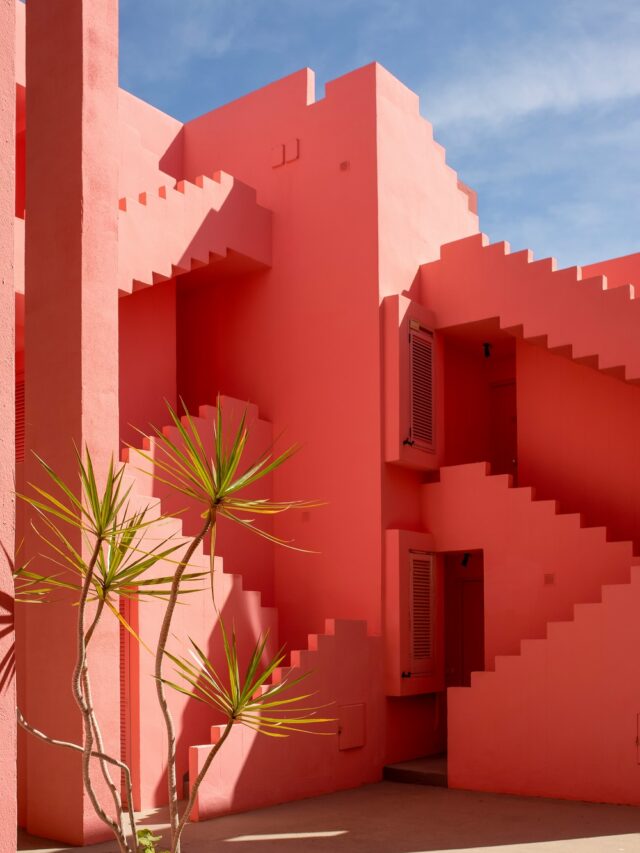Ricardo Bofill was an influential Spanish architect known for his experimental and avant-garde approach. Born in Barcelona in 1939, Bofill founded the Taller de Arquitectura studio in 1963 as a collaborative collective that brought together diverse experts. Bofill’s early work in the 1960s-70s featured bold, surreal forms and modular, colorful designs in projects like the Kafka Castle apartments. In 1975, he transformed an abandoned cement factory into his iconic studio, La Fábrica. In the 1970s, Bofill pioneered futuristic social housing like the massive Walden 7 complex near Barcelona. Walden 7’s unusual stepped form was designed to facilitate communal living and represented a radical rethinking of affordable housing. Throughout his career, Bofill continuously reinvented his style from Mediterranean vernacular to postmodernism. He is considered a pioneer of experimental Spanish architecture who helped elevate social housing. Bofill’s most iconic works demonstrate his social ideals and visionary thinking. Walden 7 embodied collective living, while Les Arcades du Lac adapted classical forms to mass housing. His bold designs created distinctive spaces and challenged mainstream modernism. Though sometimes controversial, Bofill expanded postmodernism’s formal language and changed perceptions of affordable housing. By bringing color, monumentality, and surreal forms to projects like Les Espaces d’Abraxas, he demonstrated the uplifting potential of residential architecture. Bofill’s willingness to continuously evolve and blend disparate influences shows the adaptability of postmodernism. His highly collaborative studio, Taller de Arquitectura, also became an influential model. Ricardo Bofill uniquely impacted 20th-century architecture through his radical imagination and social focus.
Who is Ricardo Bofill?
Ricardo Bofill was a visionary Spanish architect known for his experimental approach to design. He was born to a prominent Catalan family in 1939 in Barcelona, Spain. RBTA operated as a collaborative think-tank, bringing architects, engineers, sociologists, and other experts together to develop innovative architectural concepts. Bofill was deeply influenced by Catalan culture and architecture, as well as surrealist and postmodern ideas. His early projects in the 1960s and 70s featured bold, modular designs and vibrant colors, like the Kafka Castle apartments in Sant Pere de Ribes. In 1975, he transformed an abandoned cement factory on the outskirts of Barcelona into his studio, residence, and architectural manifesto, La Fábrica.
Bofill began working on monumental social housing estates in France, such as Les Arcades du Lac and Les Espaces d’Abraxas. These futuristic projects aimed to provide quality, communal living spaces for the working class. Bofill’s most famous building, the Walden 7 apartments in Sant Just Desvern, Barcelona, embodied his socialist ideals of collective ownership and an alternative model of urban living. Through his romantic housing projects and subversive reuse of Classical forms, Ricardo Bofill created an architecturally thrilling and socially transformative body of work that still inspires architects today. He passed away in January 2022 at 82, leaving behind an unparalleled legacy of idealism and imagination.
What type of architecture is Ricardo Bofill representing?
Ricardo Bofill was known for his experimental and avant-garde approach to architecture that incorporated a wide range of influences and continuously reinvented itself. He began his career in the 1960s designing colorful, modular housing projects inspired by Mediterranean and North African vernacular architecture. This can be seen in early projects like the Kafka Castle apartments and the Xanadu building. In the 1970s, Bofill pioneered monumental futuristic social housing projects like Walden 7 and La Muralla Roja that aimed to provide communal and utopian living spaces. These designs played with surrealist forms and constructivist ideas. In the 1980s, Bofill became associated with postmodernism through large-scale housing estates like Les Arcades du Lac and Les Espaces d’Abraxas near Paris.
What is Ricardo Bofill’s great accomplishment?
Ricardo Bofill’s career spans over six decades, during which he designed a wide range of monumental yet playful projects that demonstrate his strong social conscience and political views. In projects like the modular Walden 7 apartments and the surreal, color-blocked La Muralla Roja, Bofill imagined innovative ways of communal living that challenged conventional notions of the nuclear family. Both complexes offered adaptable floor plans to accommodate diverse households and lifestyle needs. Residents actively participate in managing these spaces collectively to this day. Bofill shifted social housing away from the bleak, monotonous tower blocks of the early 20th century towards more uplifting and engaging environments. His housing projects integrate the modernist social agenda with playful postmodern aesthetics using vibrant colors, unexpected geometries, and theatrical metaphors. For instance, the colonnaded Les Arcades du Lac (1981) aptly earned the “Versailles for the people.”
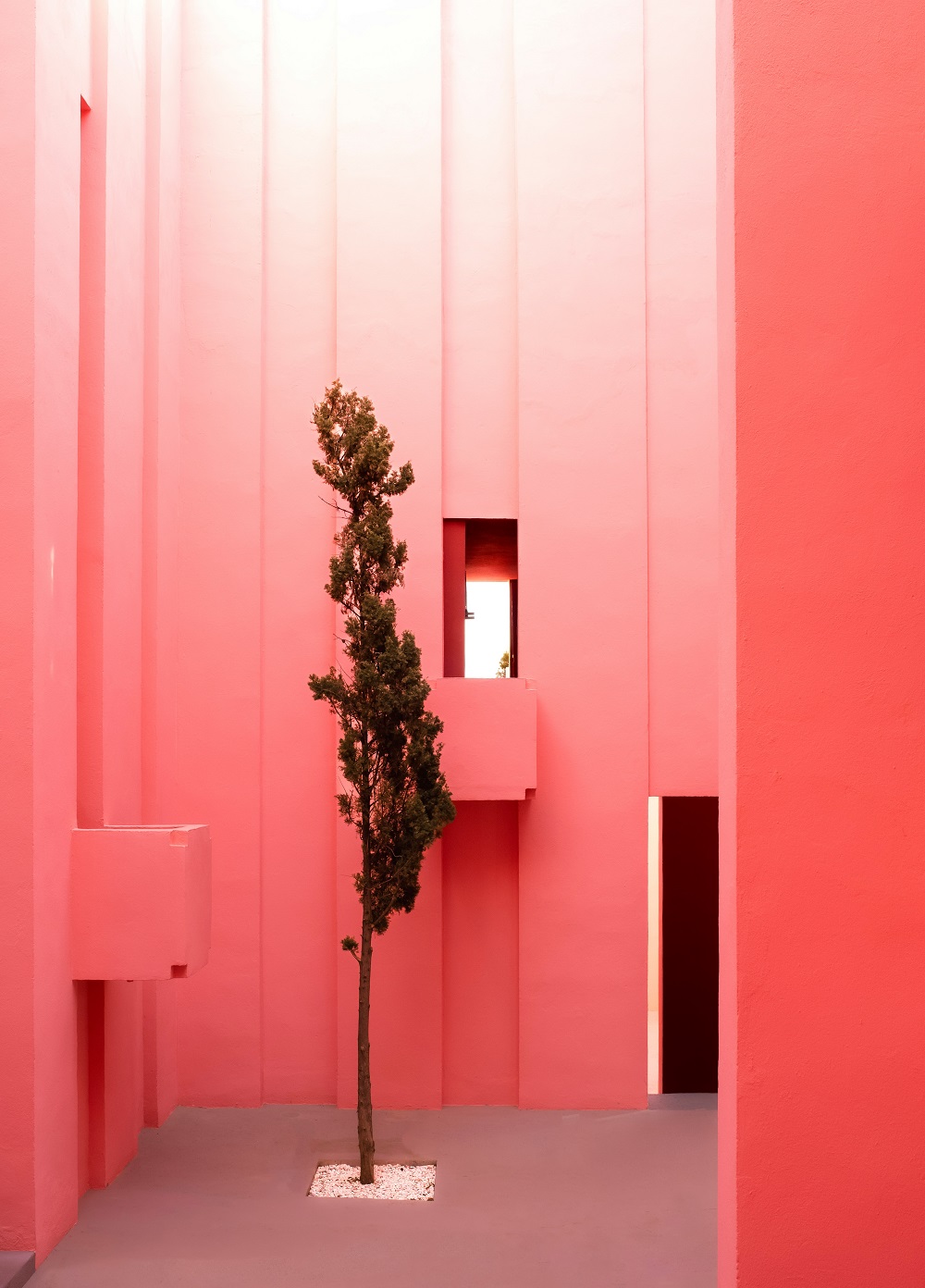
What is Ricardo Bofill’s most important work?
The Spanish architect Ricardo Bofill was known for his bold, futuristic housing projects and social housing developments. Three of his most iconic projects exemplified this goal: Walden 7, Les Arcades du Lac, and Les Espaces d’Abraxas. Through these and other conceptual housing projects, Ricardo Bofill created distinctive buildings that aimed to bring quality architecture to the masses. His social housing developments remain some of his most ambitious and influential works.
1. Walden 7
Walden 7 is a massive 14-story modular apartment complex located on the outskirts of Barcelona. Designed to embody Bofill’s socialist ideals and vision for communal living, its unusual form resembles a living organism with apartments clustered around five internal courtyards. The 450 identical flats are connected by a network of footbridges and balconies, which create a complex spatial experience. Walden 7 pioneered ideas of collective ownership and was designed to adapt to residents’ changing needs over time. Seen as an architectural manifesto, it brought monumentality and color to affordable housing and represented a radical rethinking of communal urban living spaces.
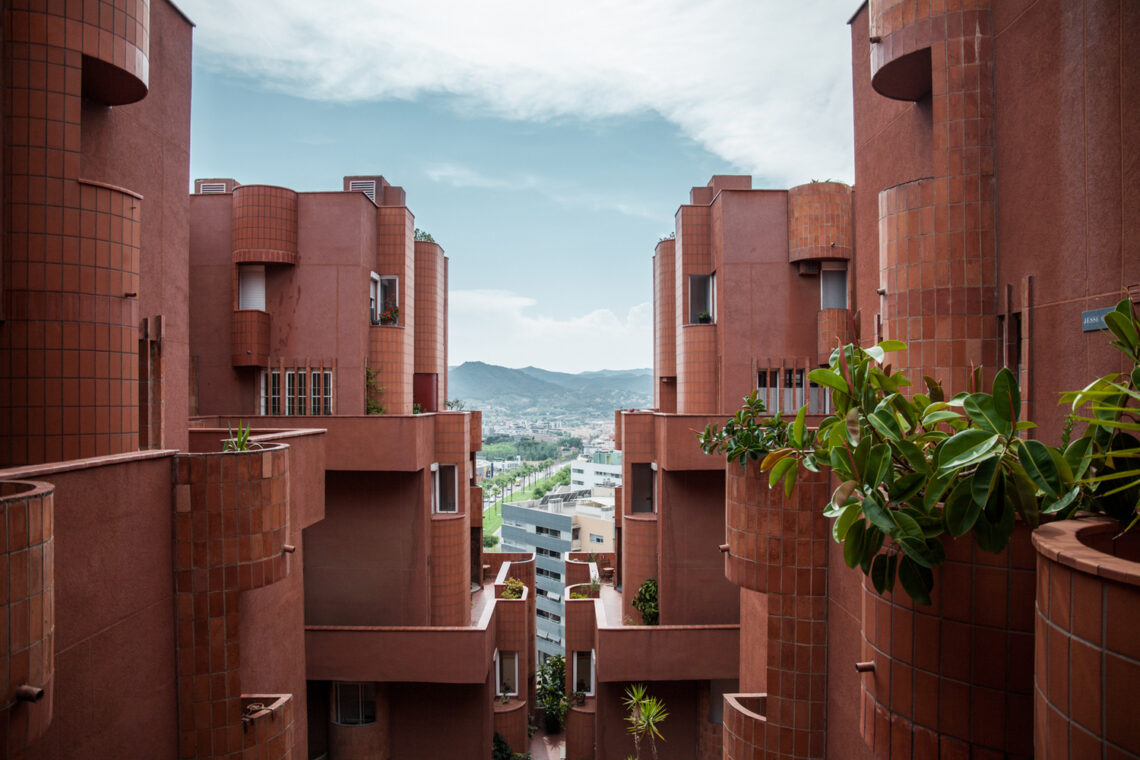
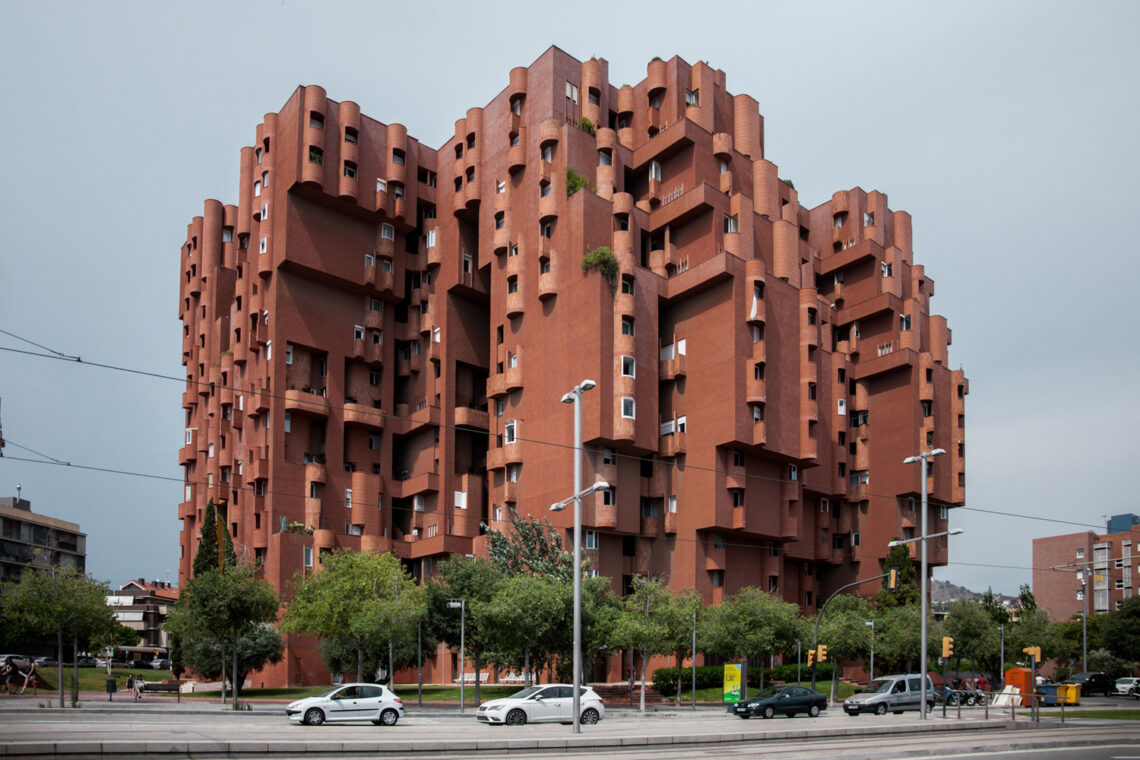
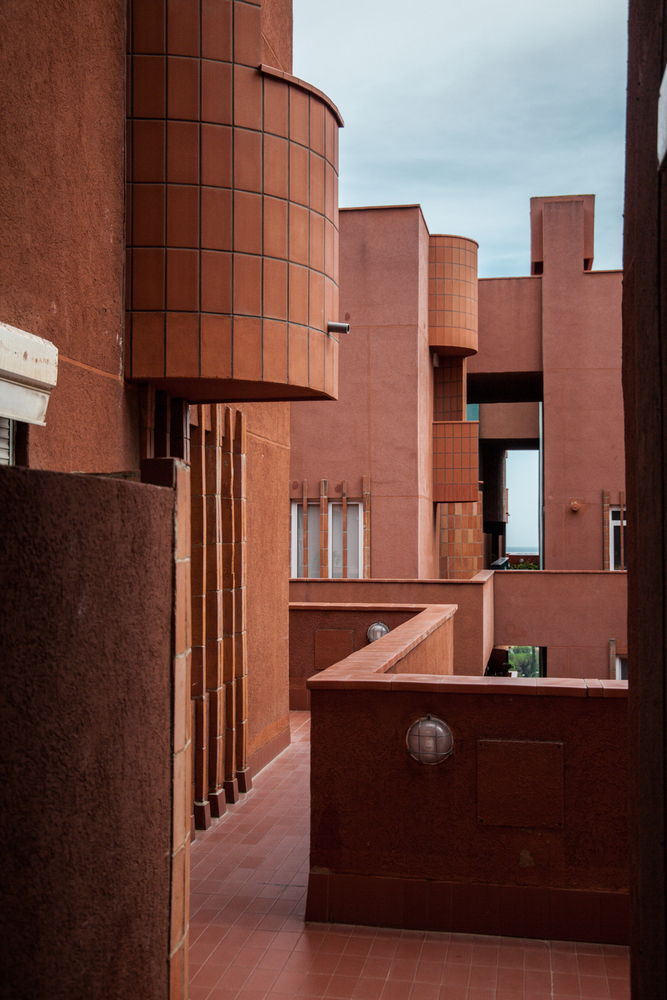
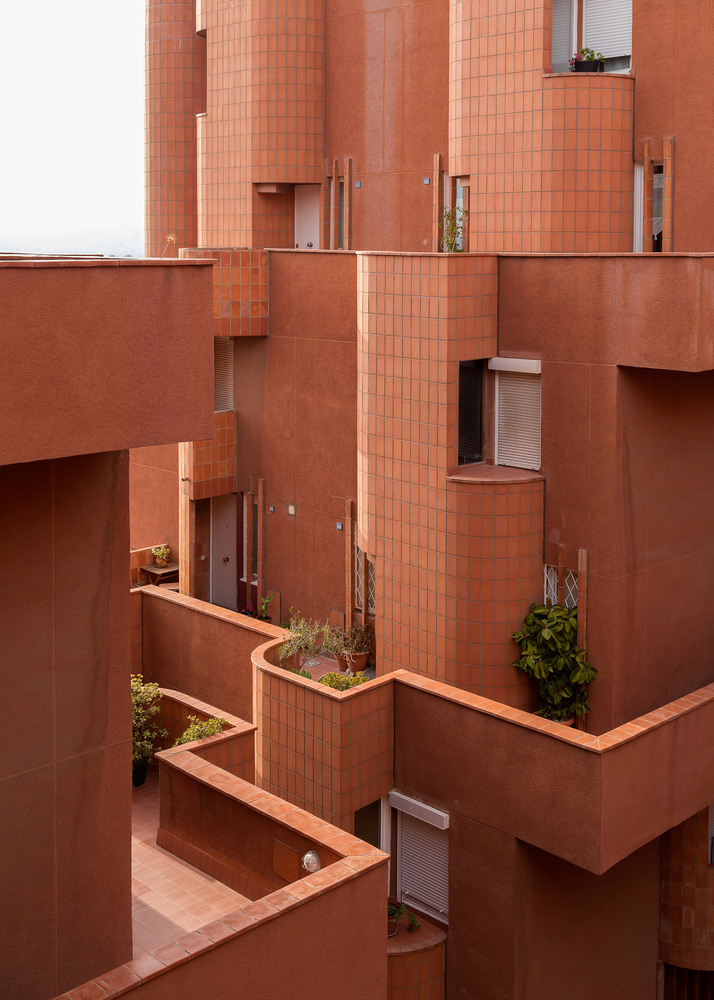
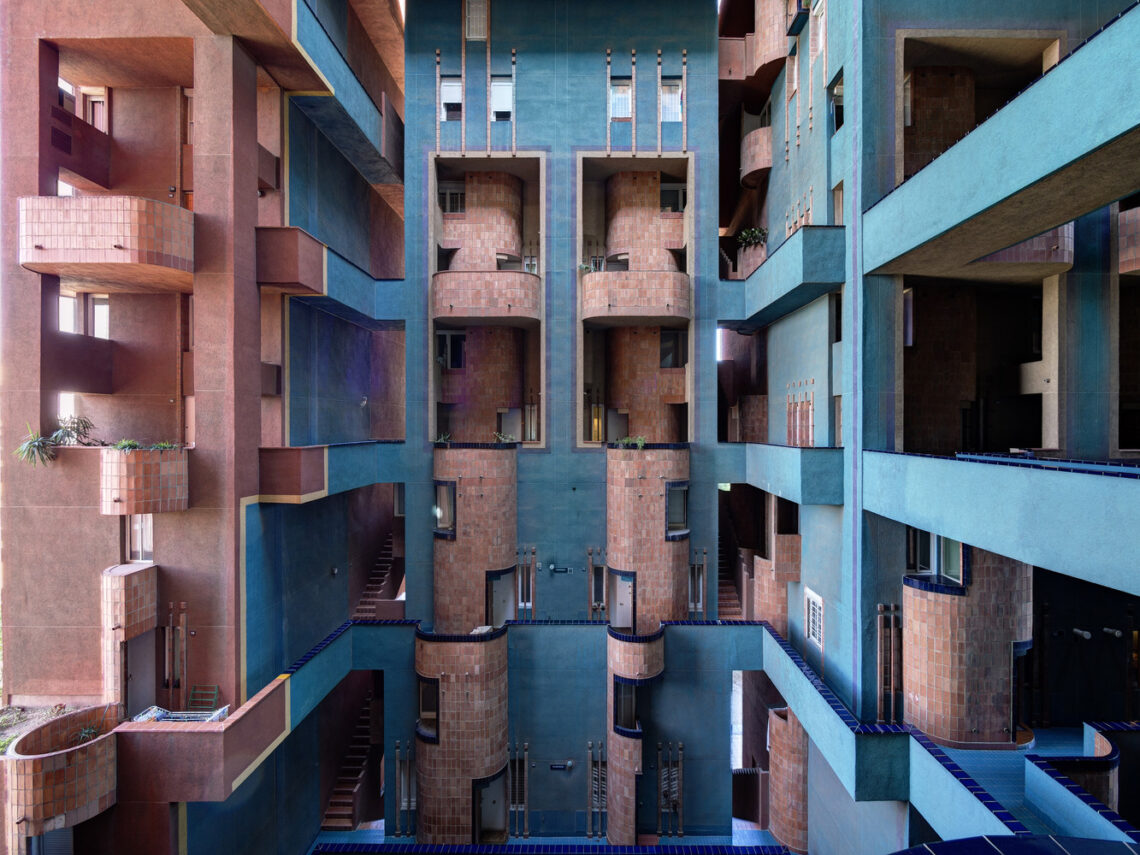
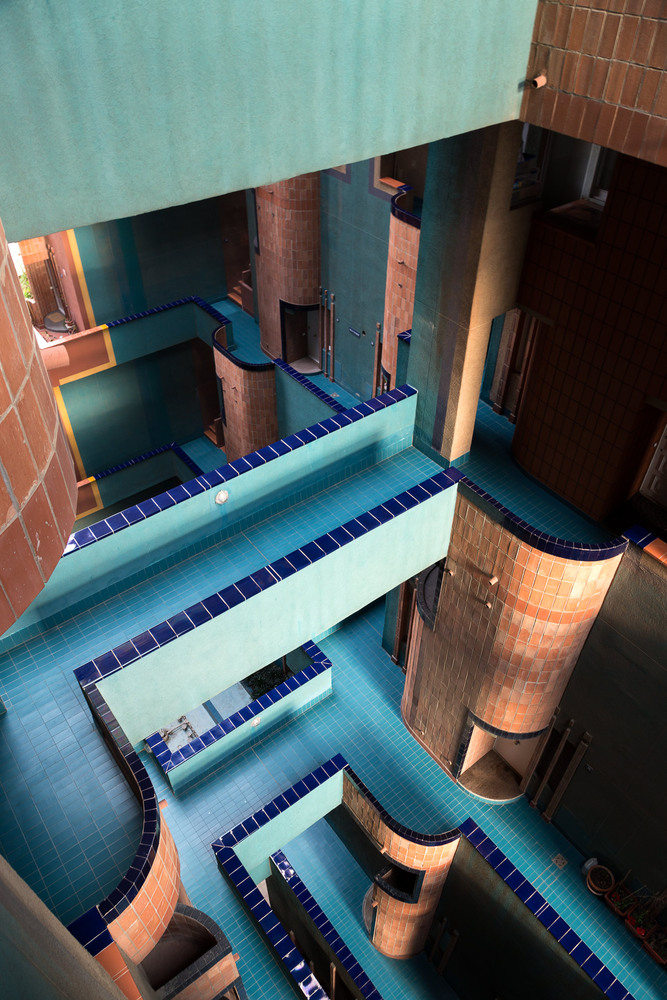
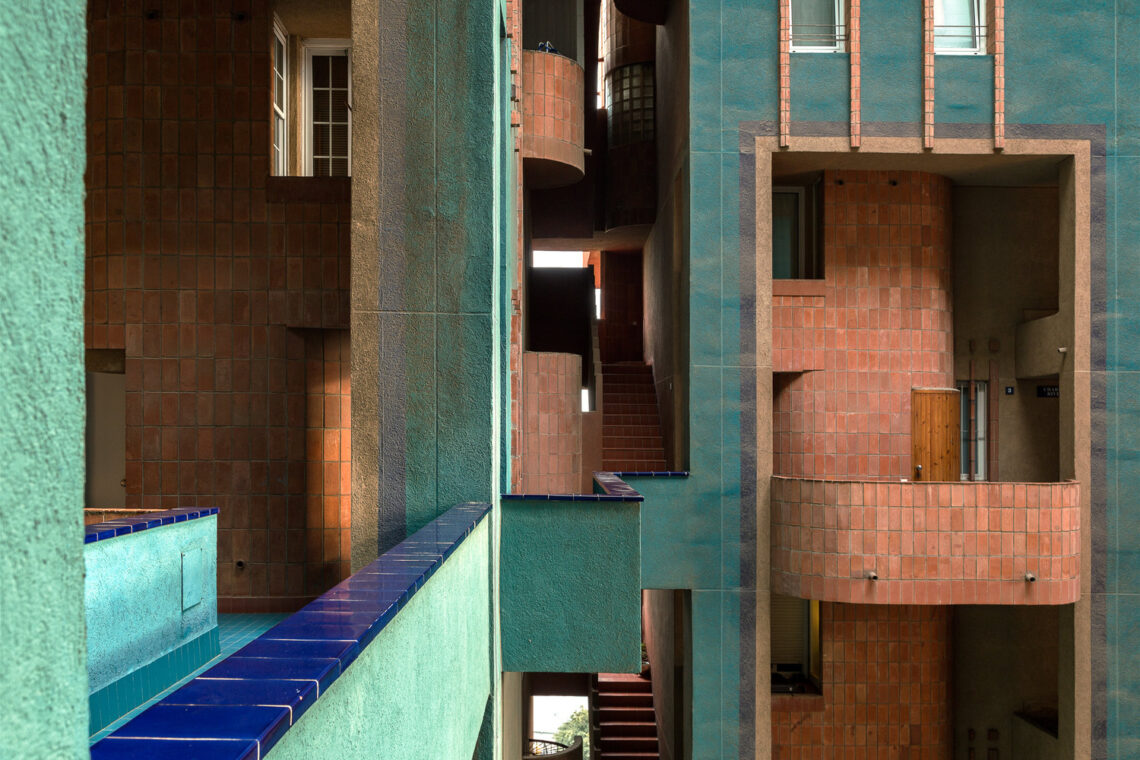
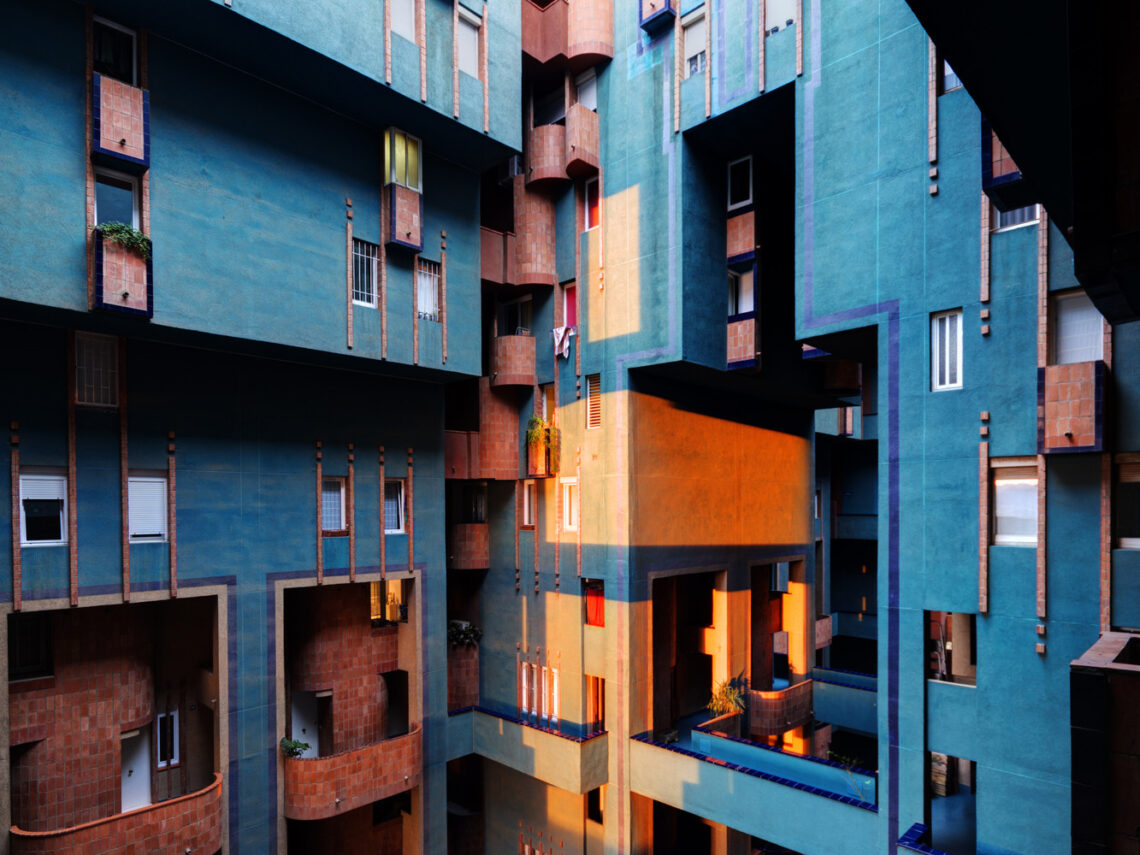
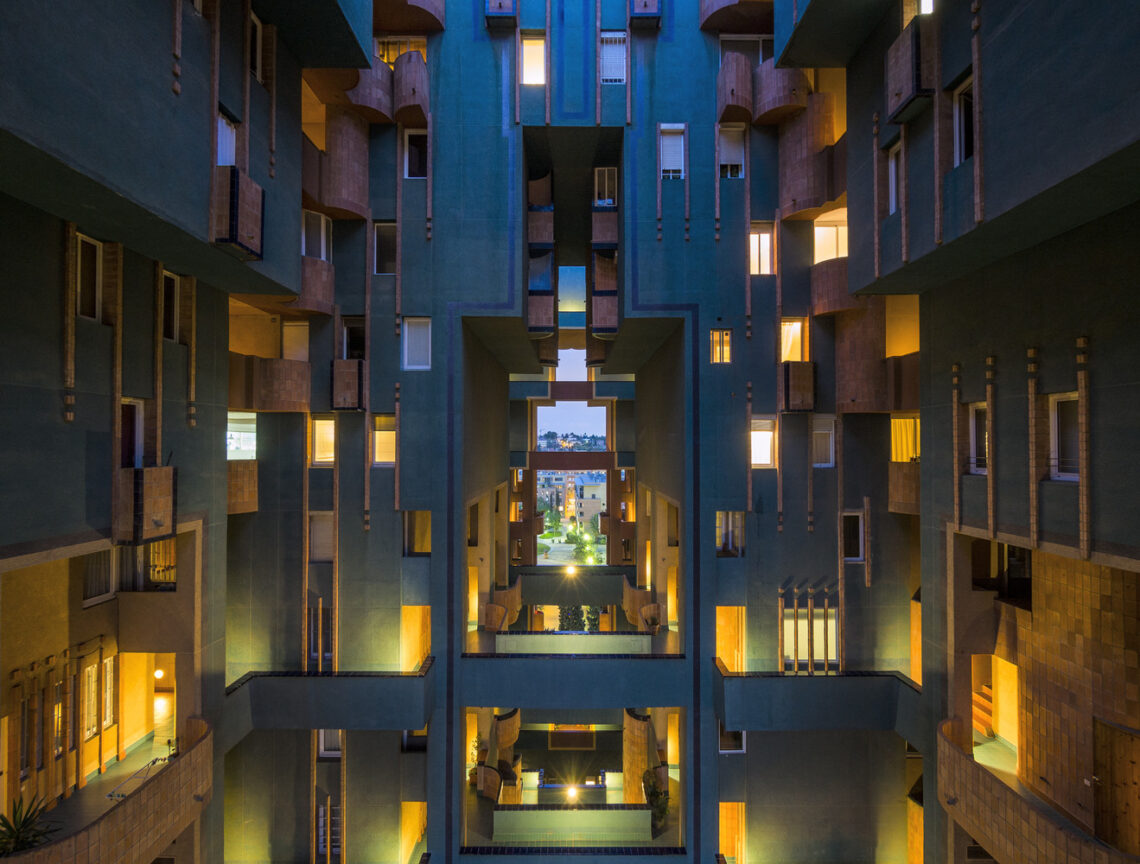
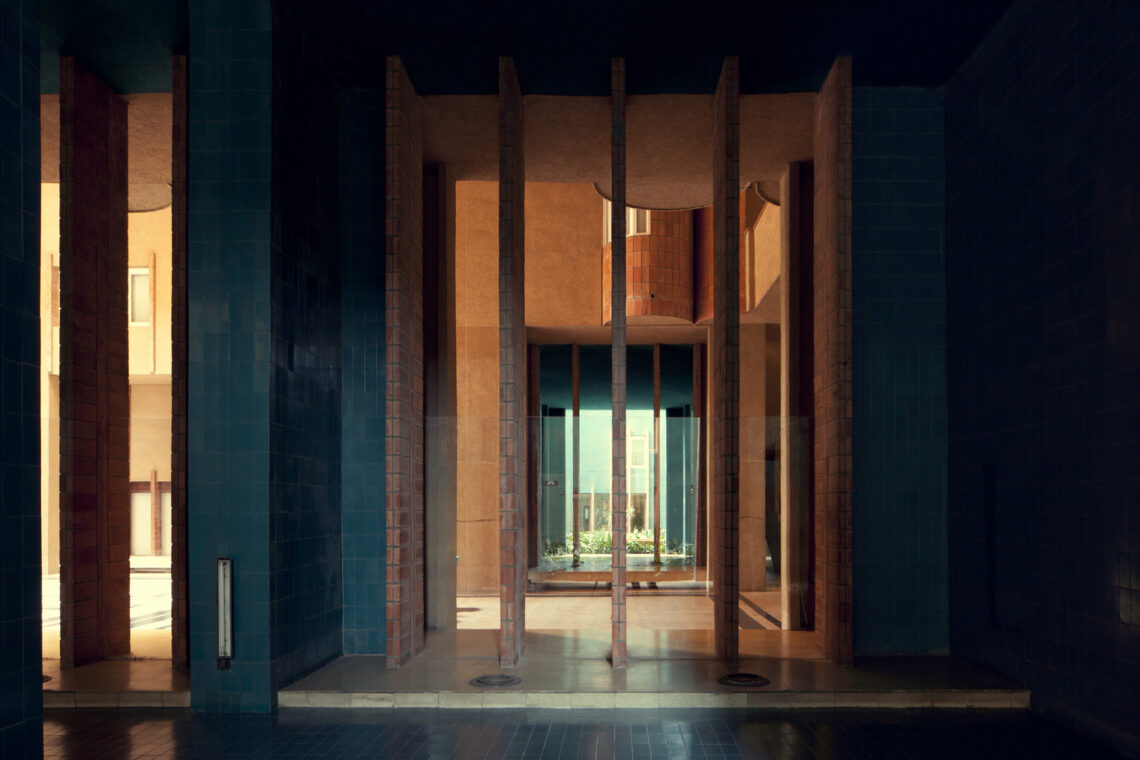
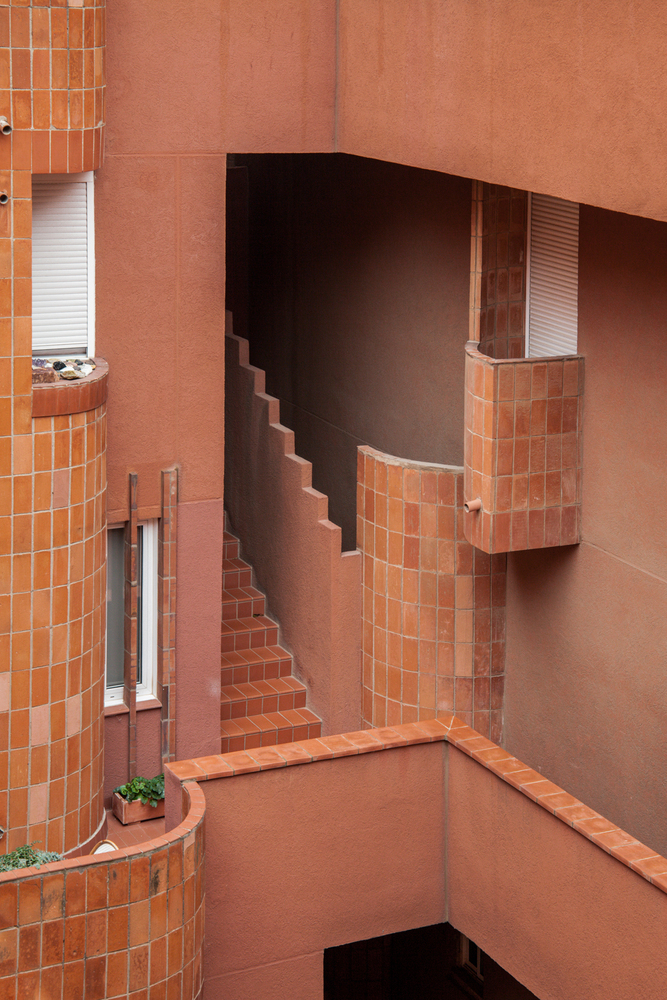
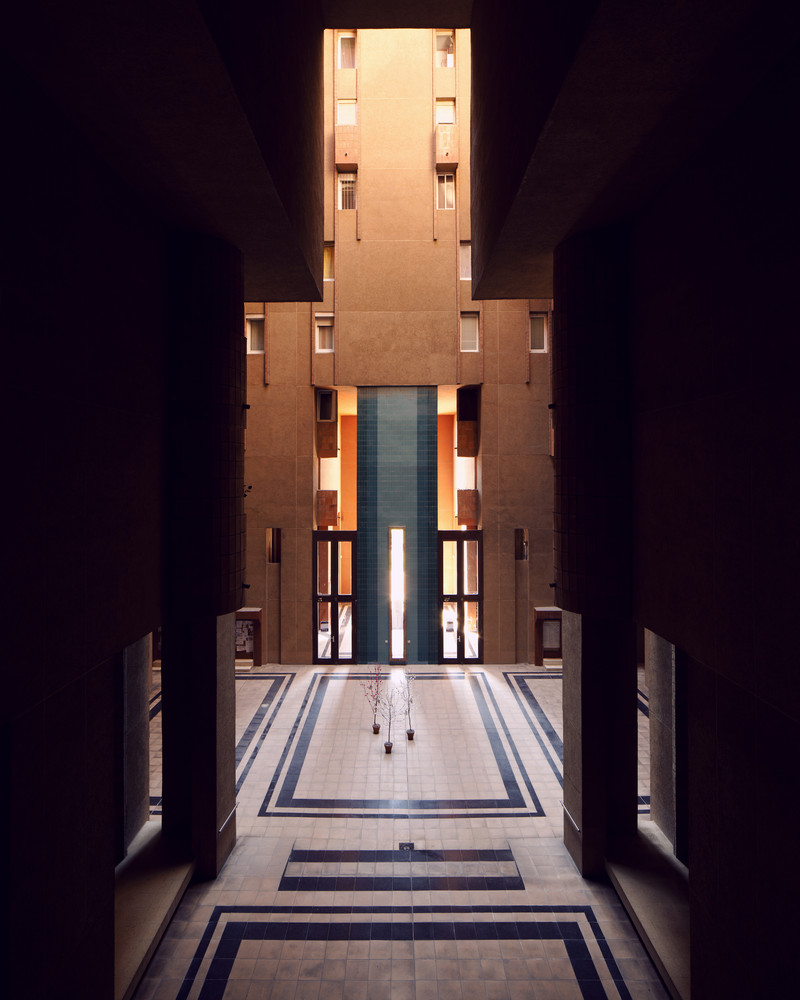
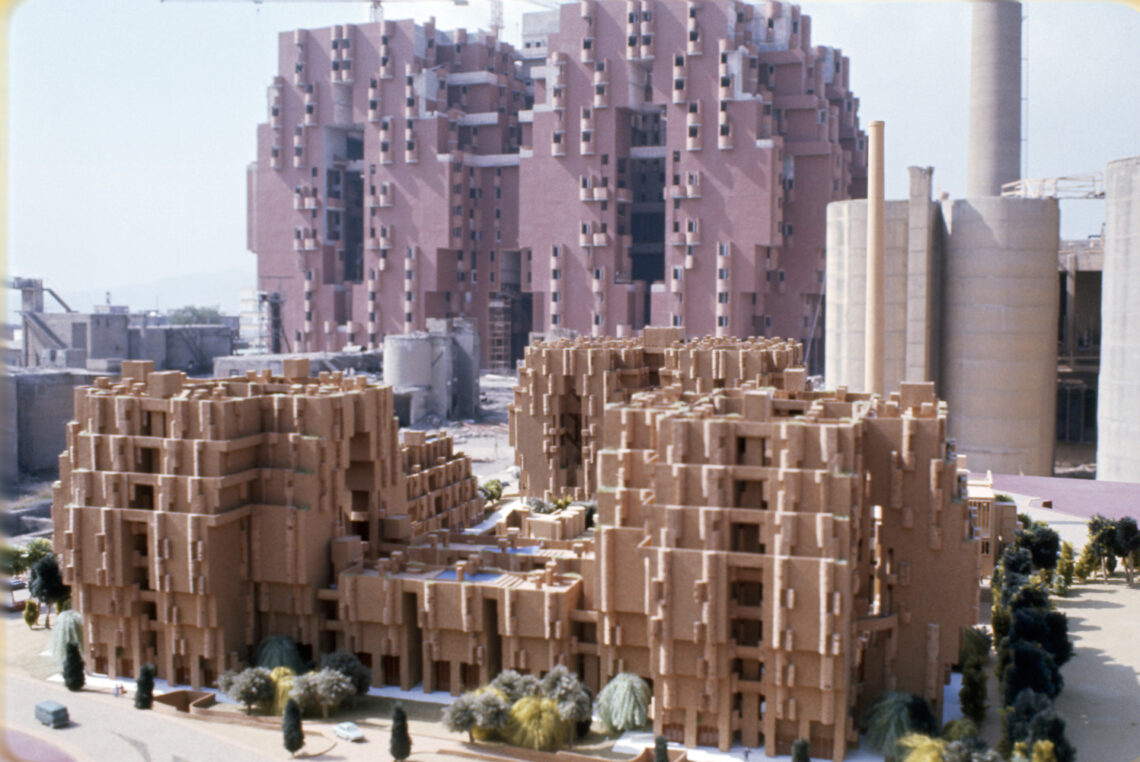
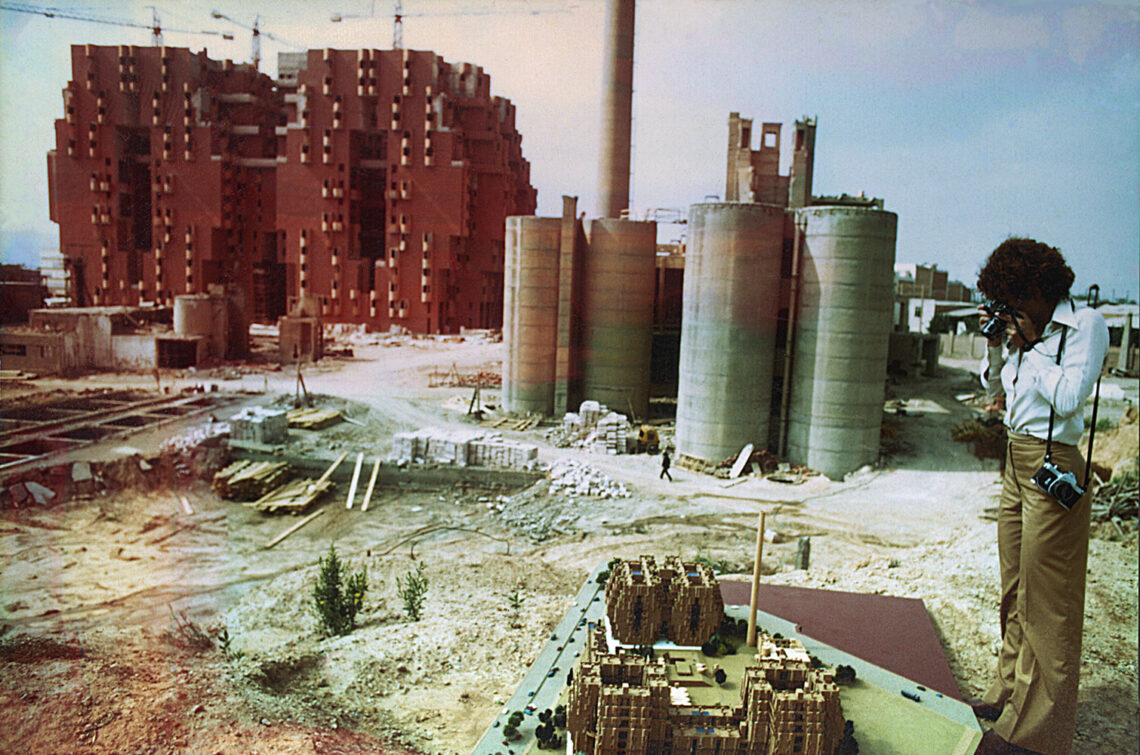
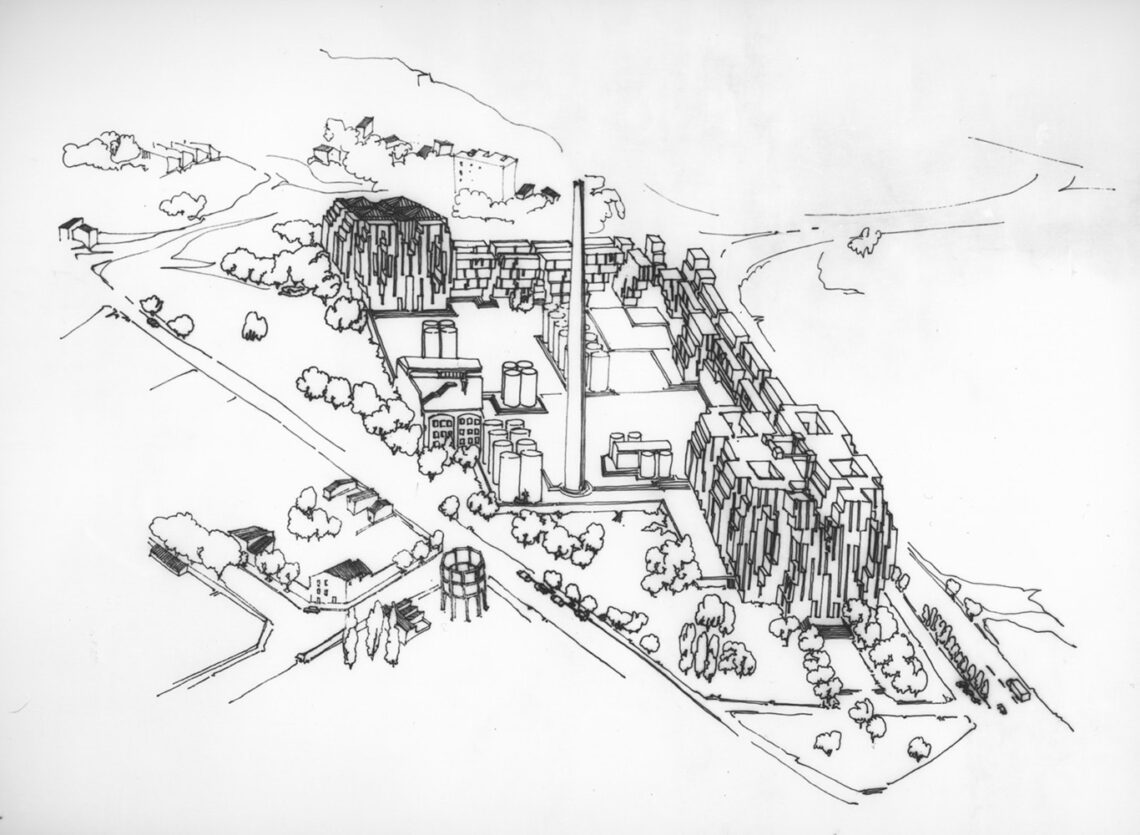
2. Les Arcades du Lac
Les Arcades du Lac is a surreal social housing project outside Versailles in France. It consists of monumental curved apartment blocks that resemble hedges in a historical French garden. The design draws inspiration from the Palace of Versailles, earning its nickname “Versailles for the people.” The project’s unusual integration of nature and architecture on such a large scale made it an iconic example of postmodernism while furthering Bofill’s ideas about mass housing. Les Arcades du Lac demonstrated that affordable housing could be imaginative and uplifting.
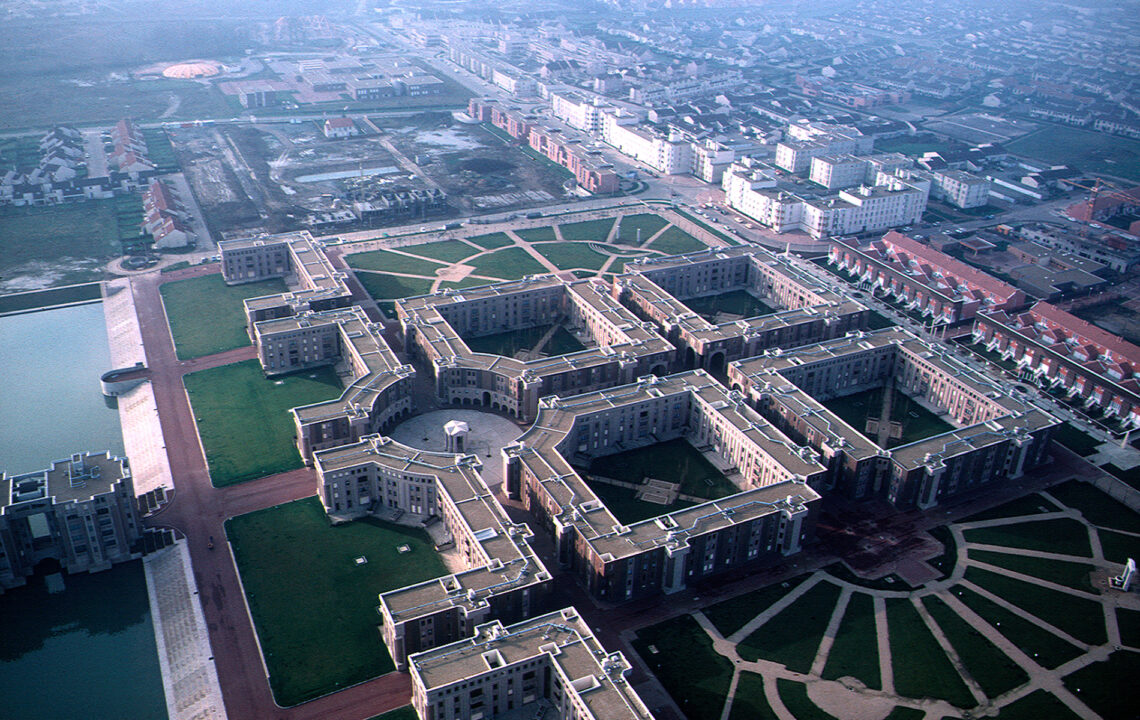
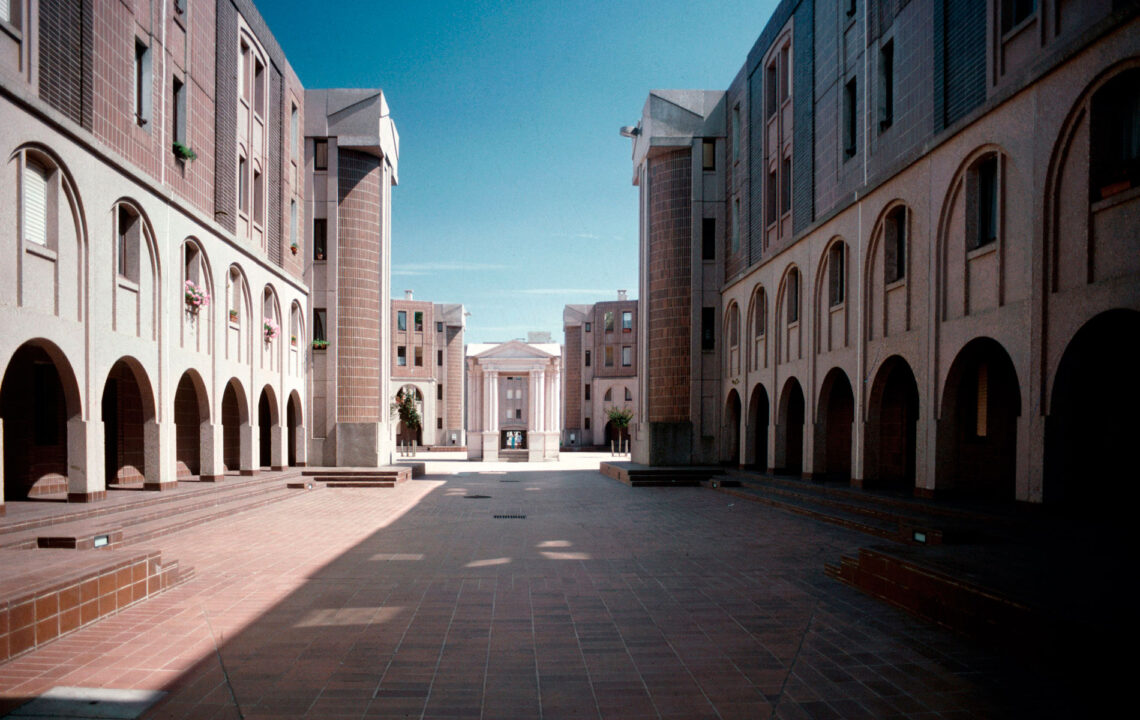
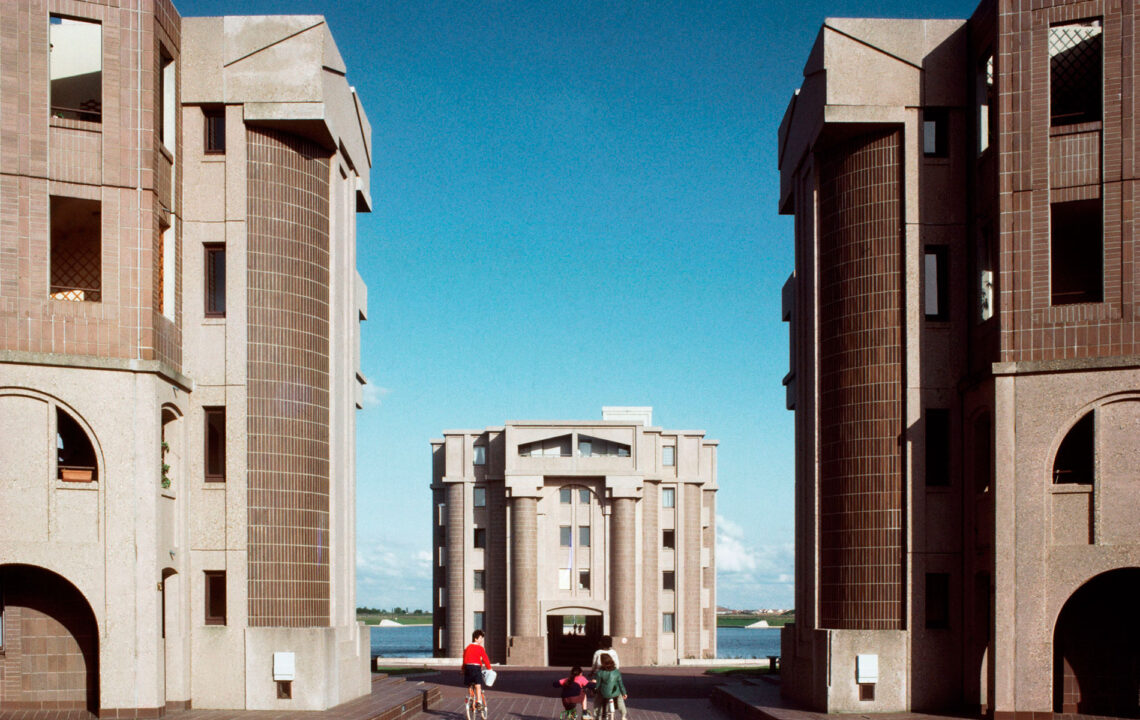
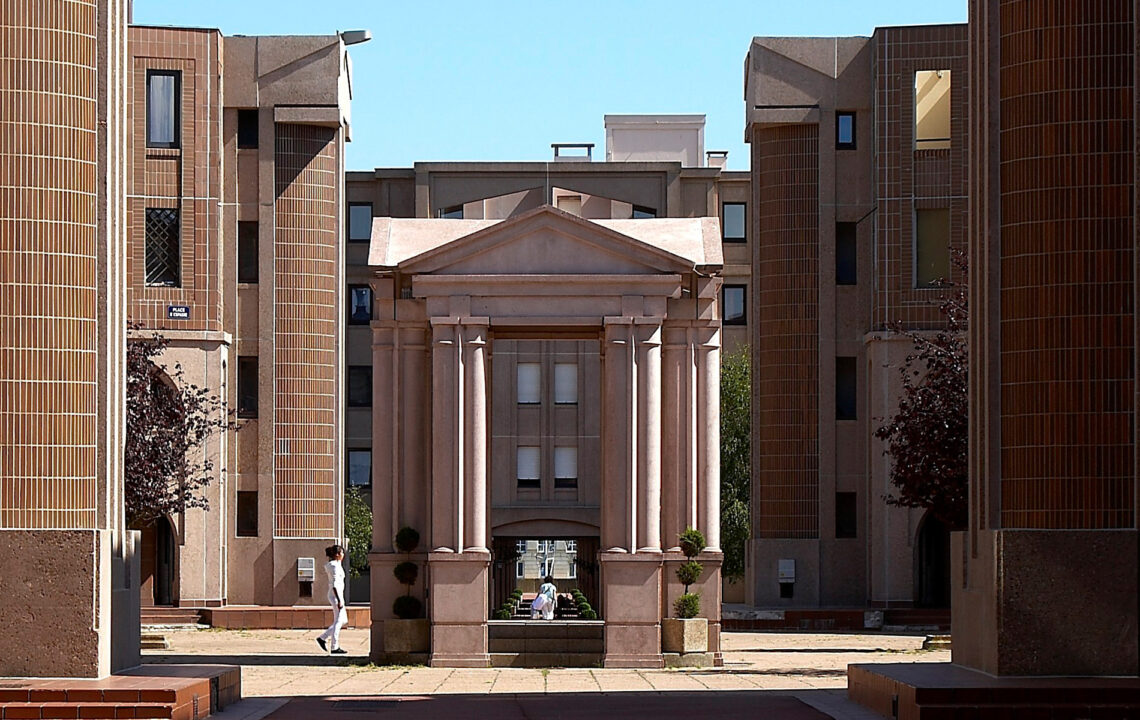
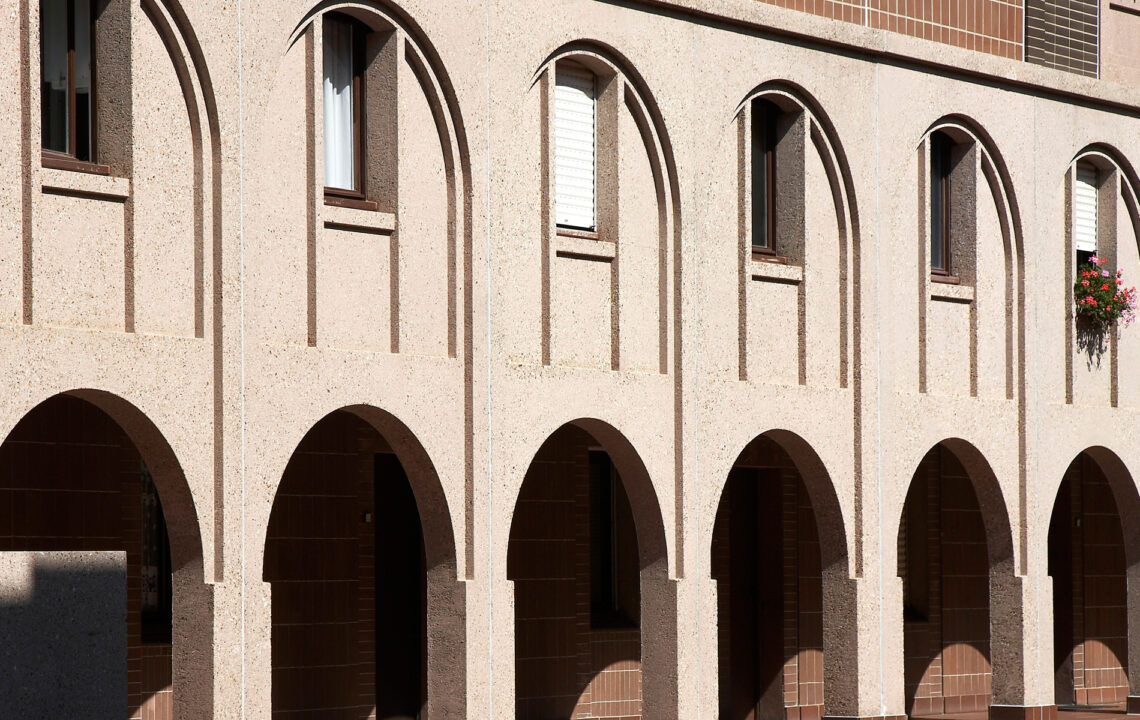
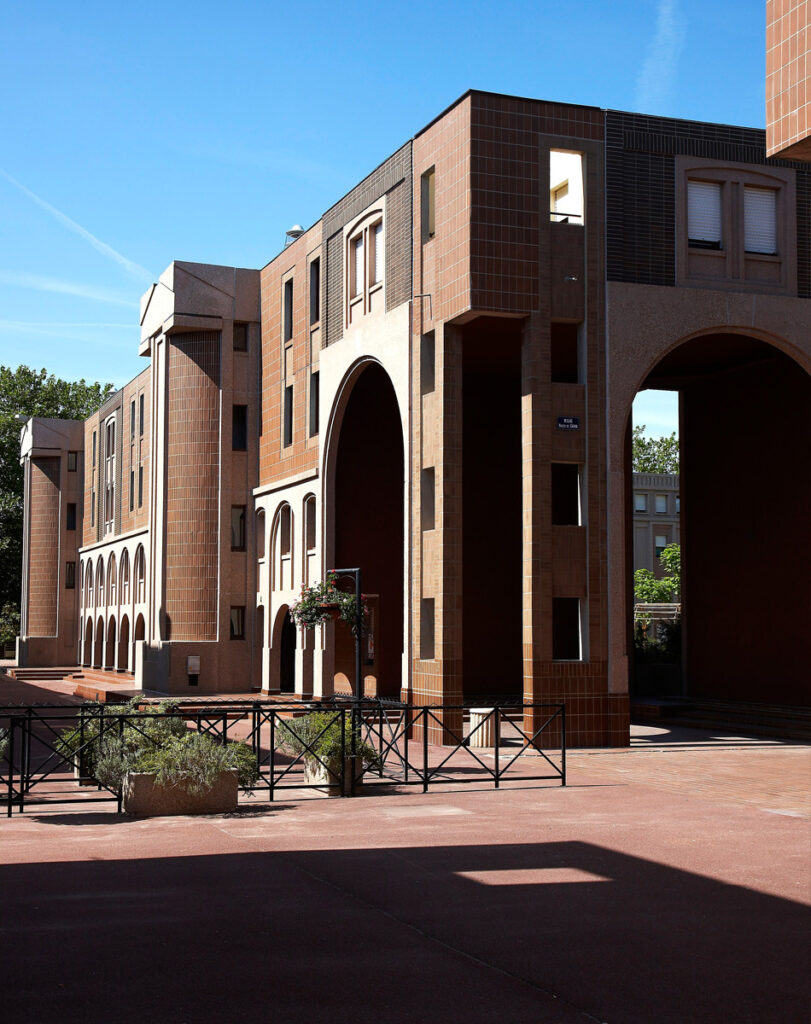
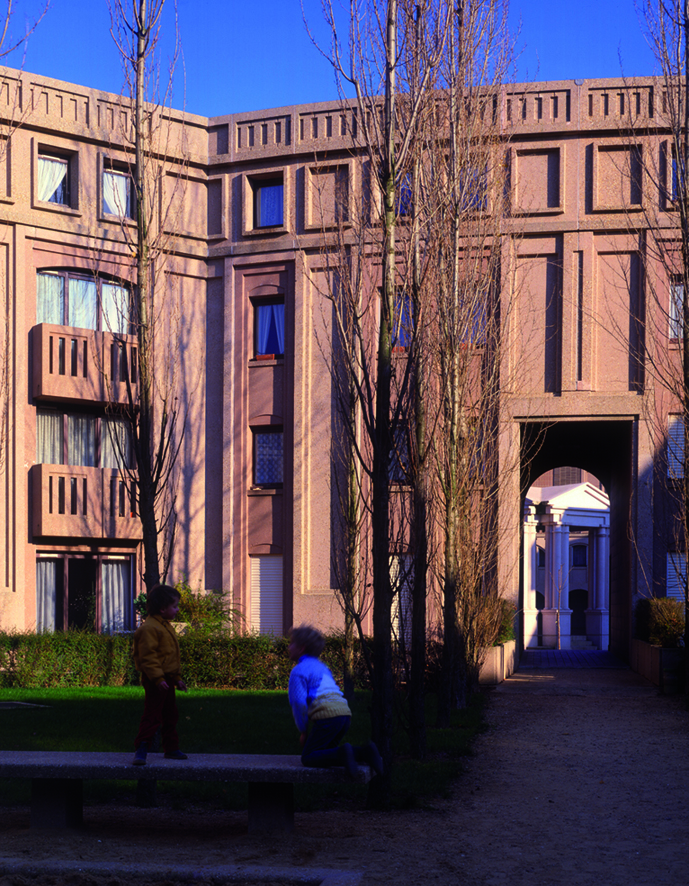
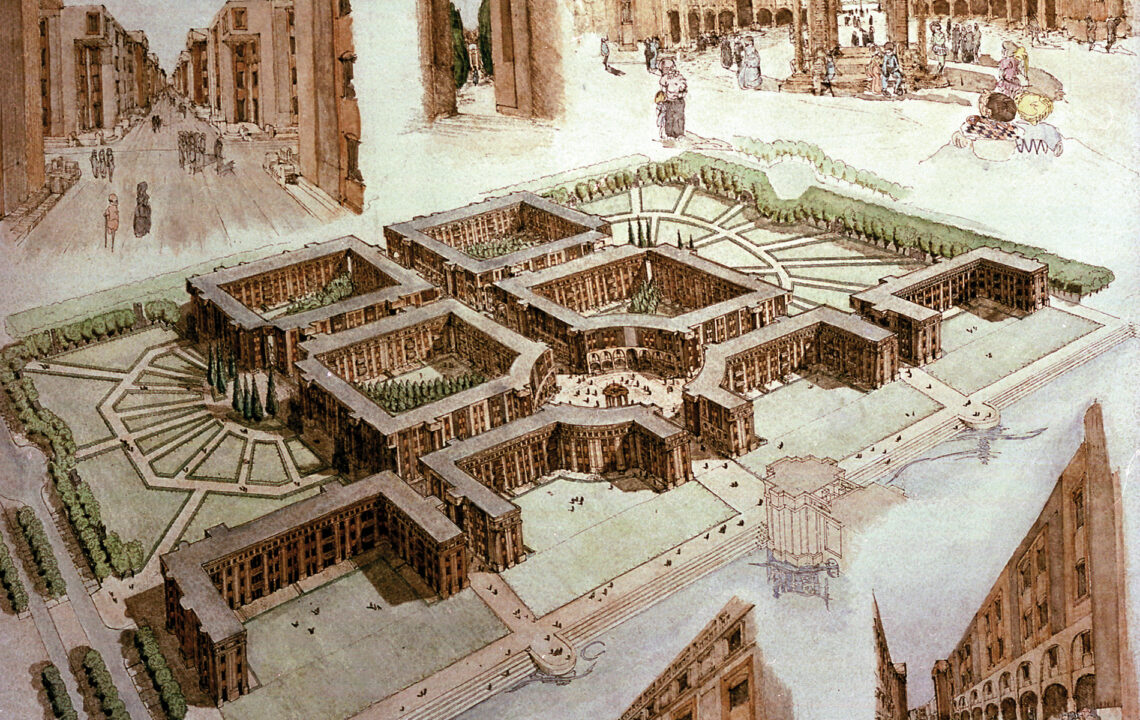
3. Les Espaces d’Abraxas
Les Espaces d’Abraxas is a housing development near Paris, exemplifying Bofill’s shift to postmodernism. Its theatrical design features exaggerated historical elements like monumental columns and pediments rendered in concrete. The buildings form a semicircular amphitheater topped by an arched opening or “urban window.” As social housing, Les Espaces d’Abraxas brought striking new forms to affordable residential architecture. Its distinctive image has appeared across popular culture from Brazil to The Hunger Games, cementing its status as an iconic work of postmodernism.
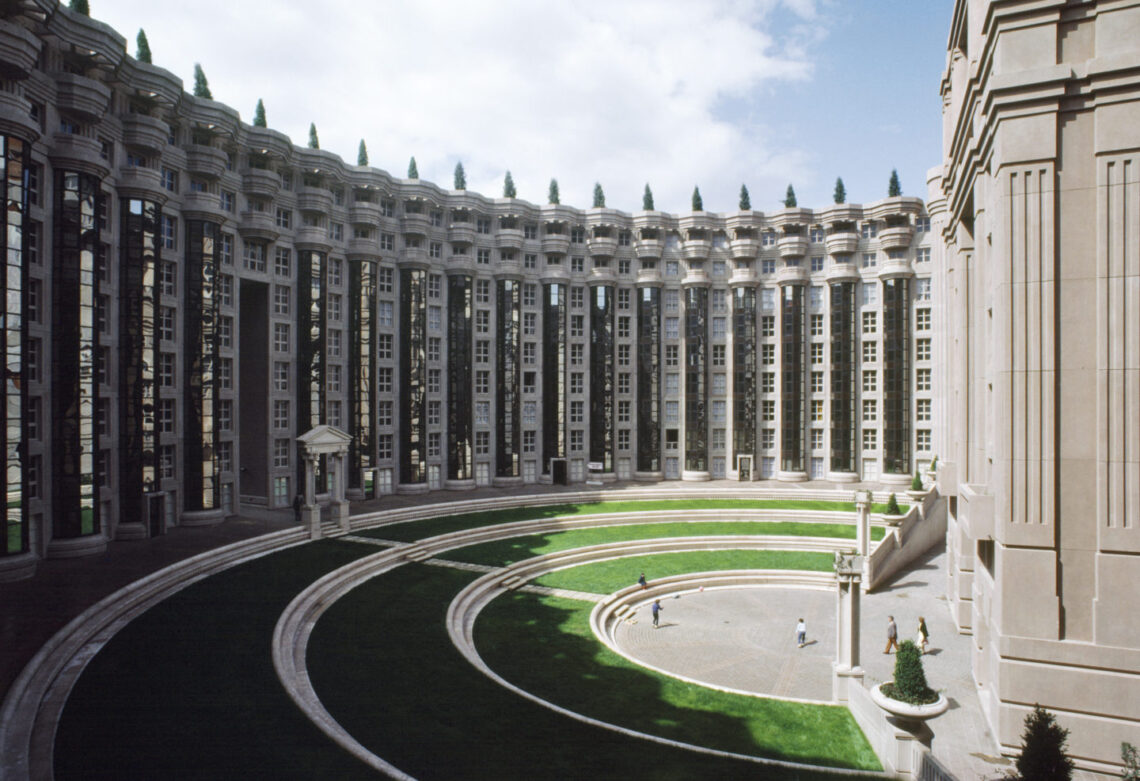
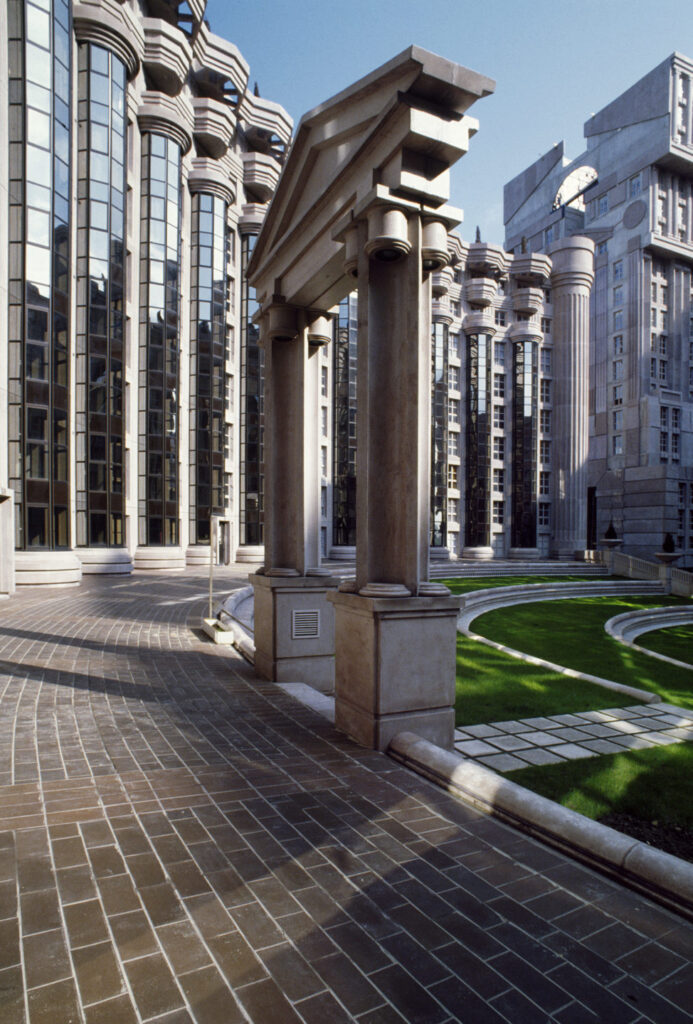
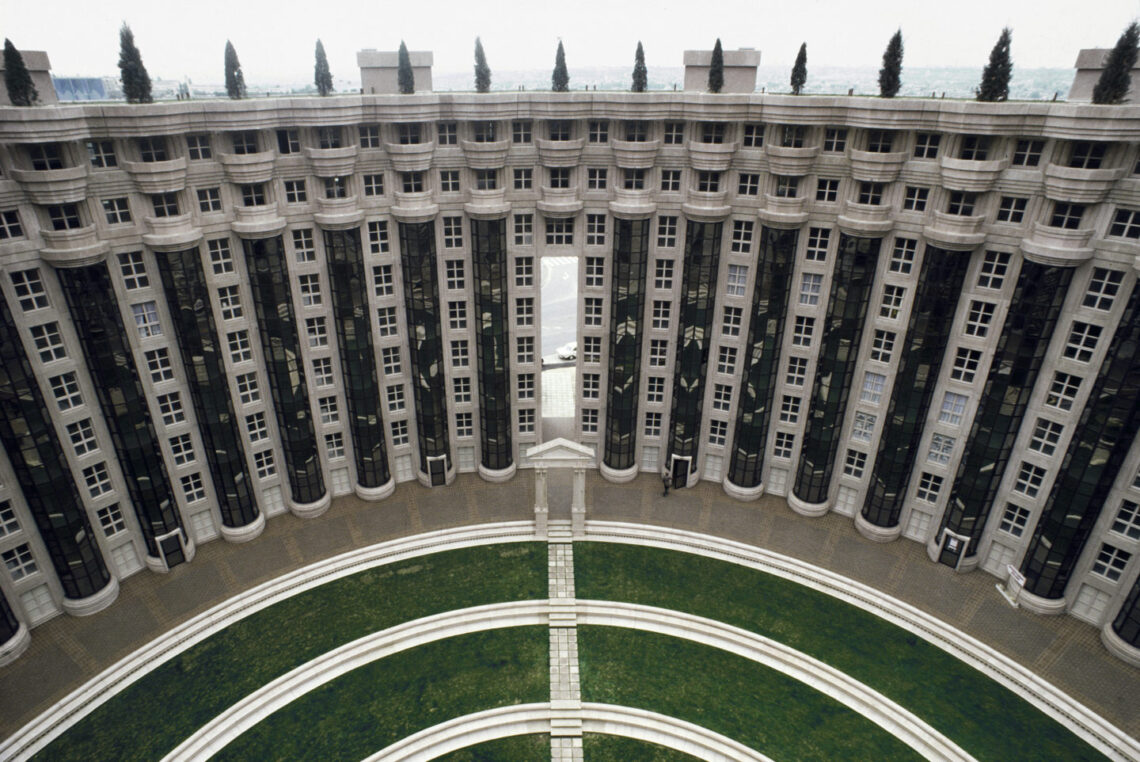
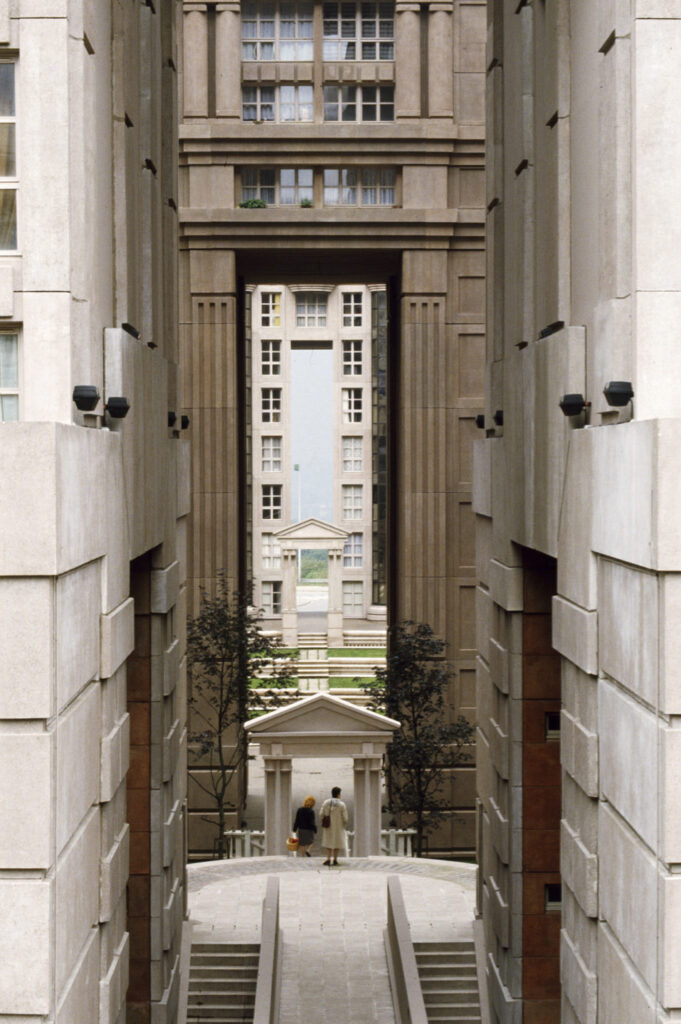
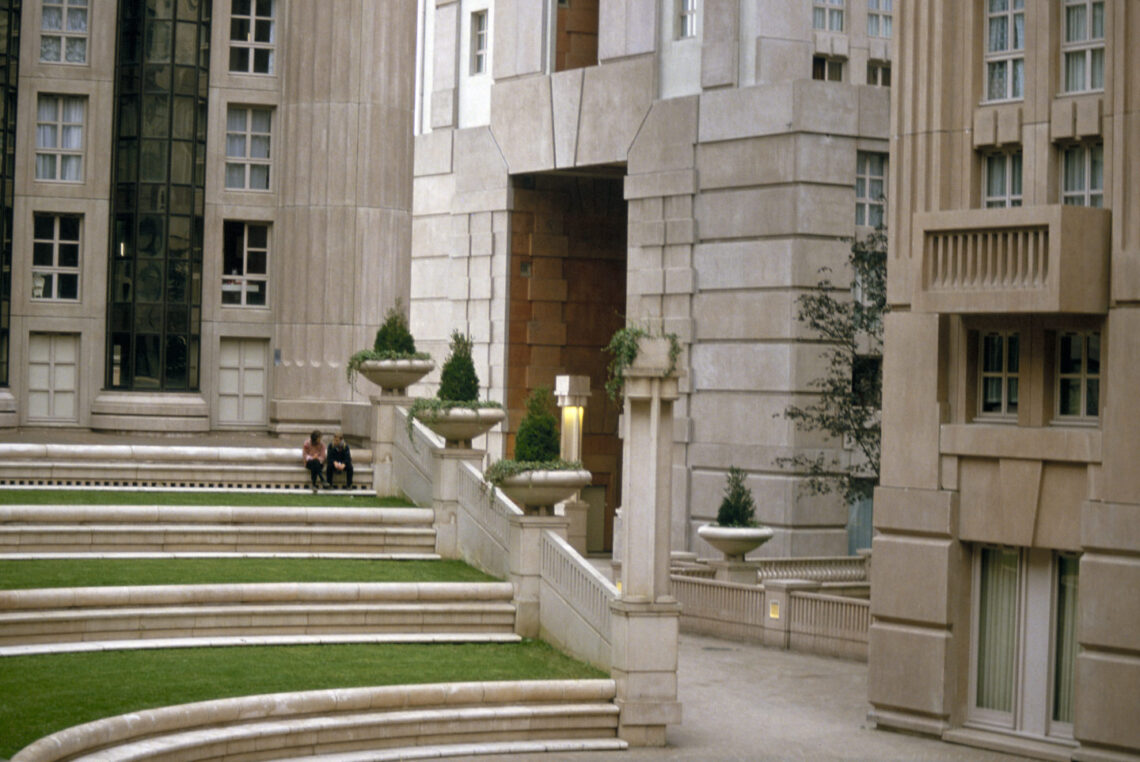
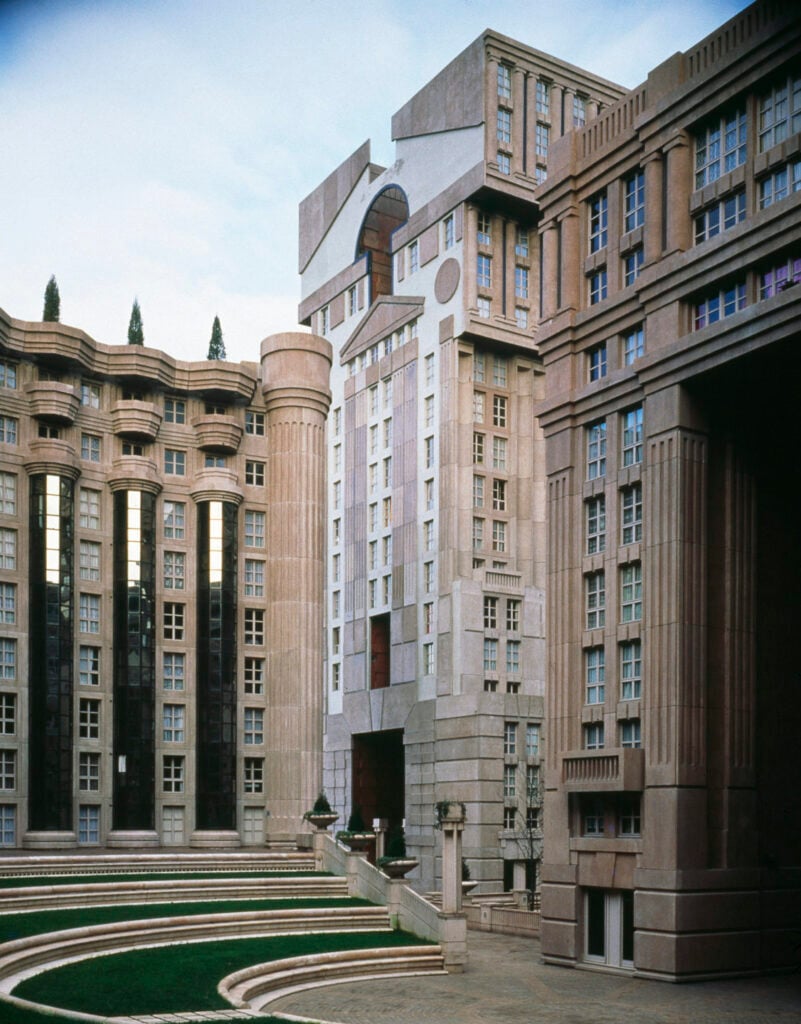
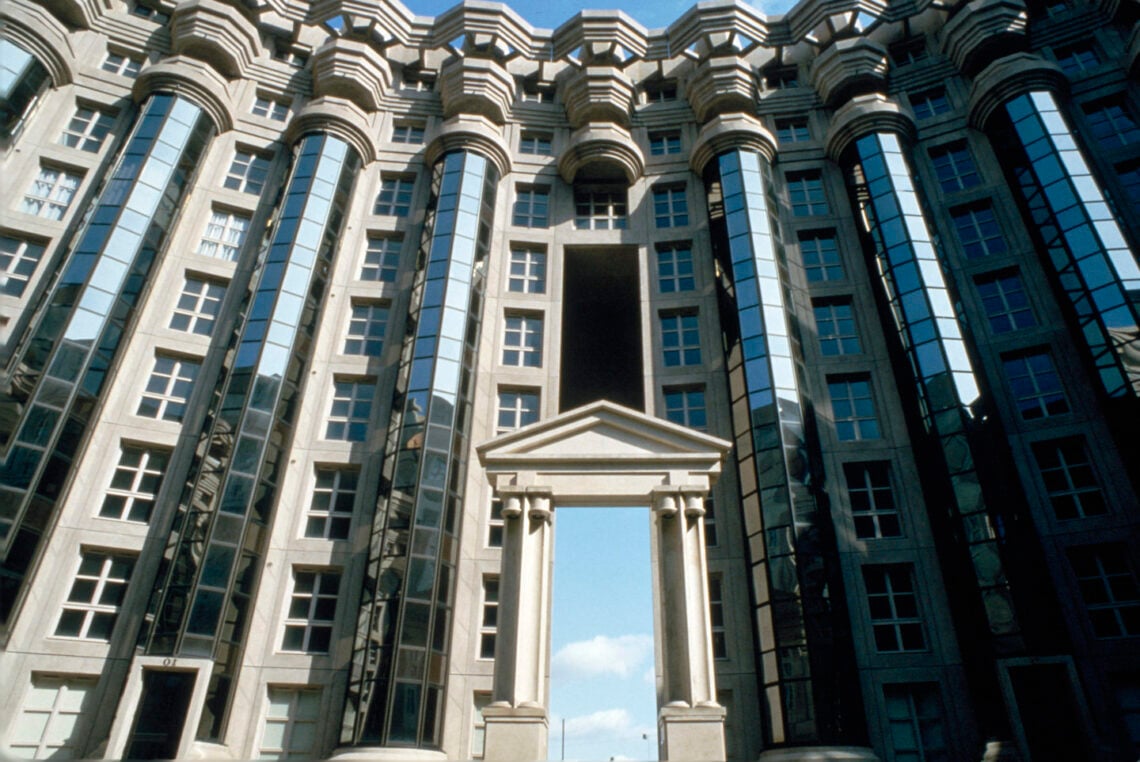
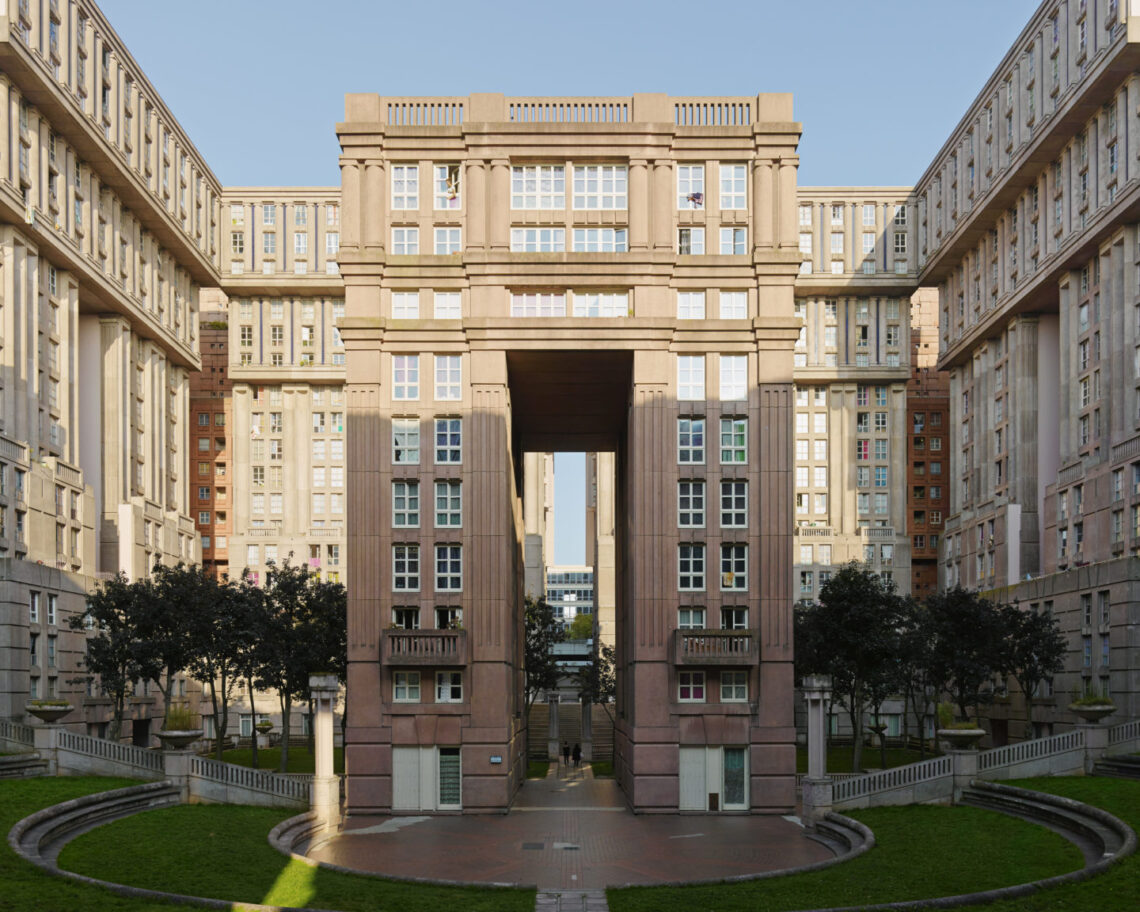
How did Ricardo Bofill contribute to architecture?
Ricardo Bofill contributed to architecture through his experimental approach and socially driven housing projects. In the 1960s and 70s, he designed colorful, modular housing developments like Kafka Castle apartments inspired by vernacular Mediterranean architecture. This expanded postmodernism’s formal language. In the 1970s, Bofill pioneered monumental futuristic social housing projects like Walden 7 and La Muralla Roja that aimed to provide communal and utopian living spaces. These designs played with surrealist forms and pushed the boundaries of affordable housing. In the 1980s, Bofill became associated with postmodernism through large-scale housing estates like Les Arcades du Lac and Les Espaces d’Abraxas near Paris. These projects featured exaggerated historical elements rendered in concrete on a grand scale, bringing postmodern forms to mass housing. Throughout his long career, Bofill continuously reinvented himself, freely drawing inspiration from various influences from vernacular to postmodernism. He refused to stick to one style or dogma. His ability to evolve demonstrated postmodernism’s flexibility.
Did Ricardo Bofill change the architecture industry?
Yes, Ricardo Bofill changed the architecture industry in several ways. First, Bofill pioneered a radical, experimental approach to design in the 1960s and 70s, pushing the boundaries of what architecture could be. He blended styles and influences, like classical and Arabic architecture, to create otherworldly utopian projects. His early works, like the Walden 7 housing complex, were incredibly bold and stood out for their unusual, futuristic forms. Second, Bofill was dedicated to social housing and improving living conditions for the masses. Many of his most famous projects, like Les Espaces d’Abraxas, were ambitious housing developments that tried to raise the standard and perception of affordable housing. Lastly, his postmodern designs brought monumentality, color, and visuals to banal residential architecture.
Was Ricardo Bofill ever controversial in any way?
Yes, Ricardo Bofill was controversial throughout his prolific career. The unusual, almost surreal nature of projects like La Muralla Roja provoked controversy as they stood out as radical departures from mainstream modernism. However, some critics argued the designs were overblown and failed to uplift residents’ lives. Bofill’s playful use of ornamentation and historical pastiche was controversial to orthodox modernists. His collage-like mixing of disparate elements and scales challenged modernist ideals of functionalism and purity.
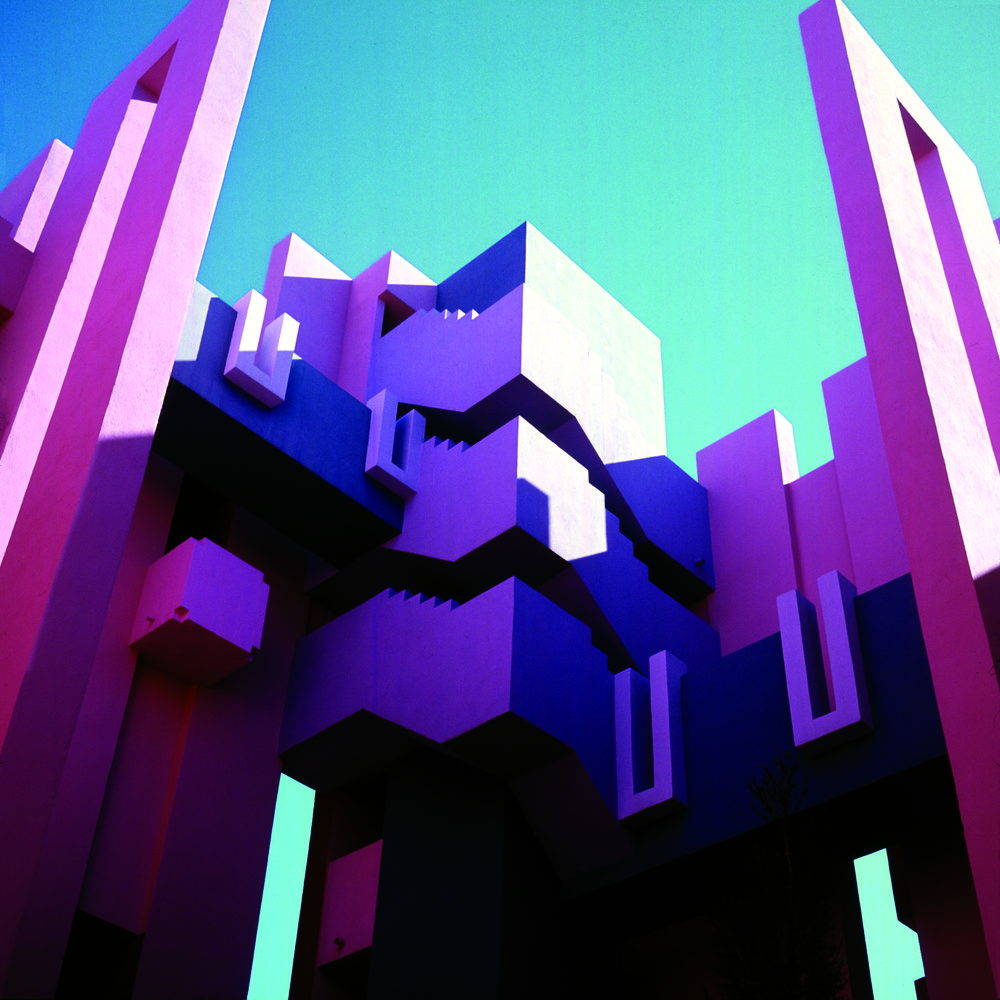
Who are the most famous architects in modern history besides Ricardo Bofill?
The most famous architects in modern history besides Ricardo Bofill are Frank Gehry, Frank Lloyd Wright, and Antoni Gaudi. Gehry is renowned for his bold, deconstructivist buildings like the Guggenheim Museum Bilbao, which feature unusual sculptural, curved forms that appear almost in motion. Wright pioneered organic architecture, seamlessly integrating natural forms into structures like the Fallingwater House and emphasizing harmony between buildings and nature across his 1,000 designs. Meanwhile, Gaudi developed an ornate, fantastical style fusing Gothic, Moorish, and Art Nouveau elements replete with decorative tile-work and grand, sweeping curves, as evidenced by his iconic La Sagrada Familia. With unusual shapes, fragmented styles, and decoration-covered sweeping curves, these three architects create inspired, imaginative forms that make their buildings instantly recognizable icons.
What did Ricardo Bofill mainly design?
These are designs Ricardo Bofill did:
- Walden 7: This apartment complex near Barcelona comprises over 400 modular, cube-shaped apartment units arranged around a series of courtyards. The geometric forms and varied heights create an otherworldly, almost surreal effect. Blue, yellow, and red are used across the facades. Walkways and bridges connect the different sections.
- La Muralla Roja: La Muralla Roja is situated atop a cliff in Calpe, Spain, this dramatic apartment building resembles a massive fortress with deep red exterior walls. The imposing design draws inspiration from ancient Arabic and North African architecture. Staircases, bridges, and arched entryways add complexity.
- Les Espaces d’Abraxas: Les Espaces d’Abraxas is considered Bofill’s most famous social housing development, this complex near Paris features monumental postmodern architecture. Classical columns, pediments, arches, and other ornate elements are combined in unusual ways with colorful block-like facades. The scale aims to uplift affordable housing.
- Les Arcades du Lac: Les Arcades du Lac is located in Saint-Quentin-en-Yvelines, France, this sizeable multi-building housing development is around a lake. The structures feature sweeping curved facades and glass walls that provide scenic water views. Brick and stone cladding add texture.
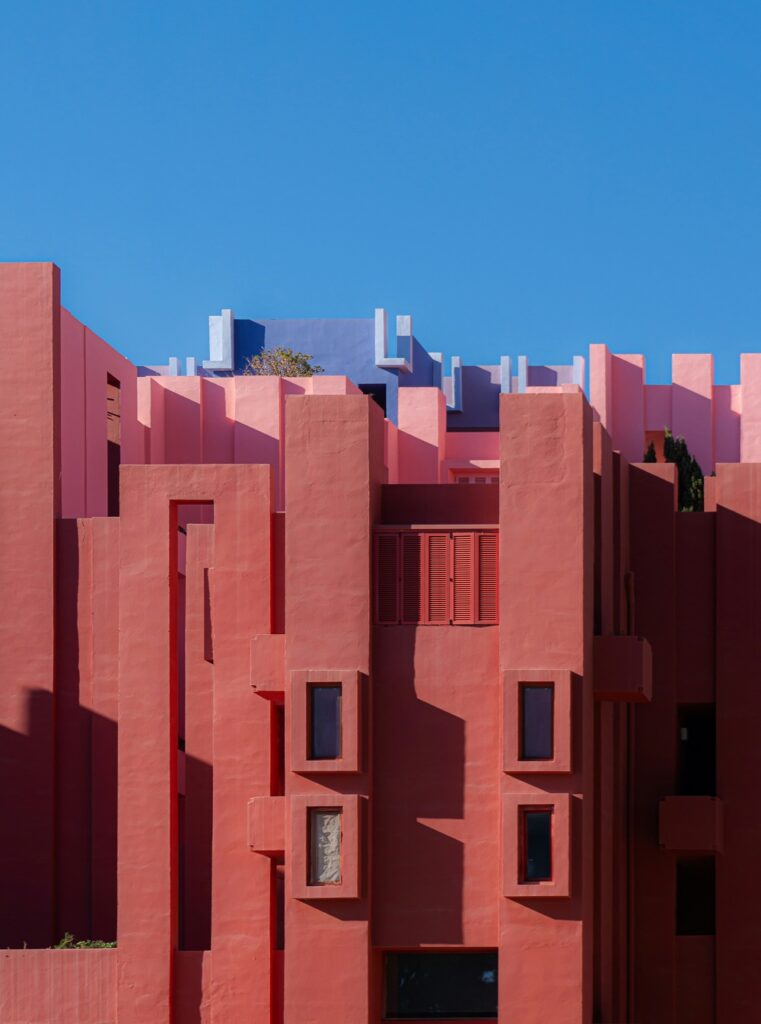
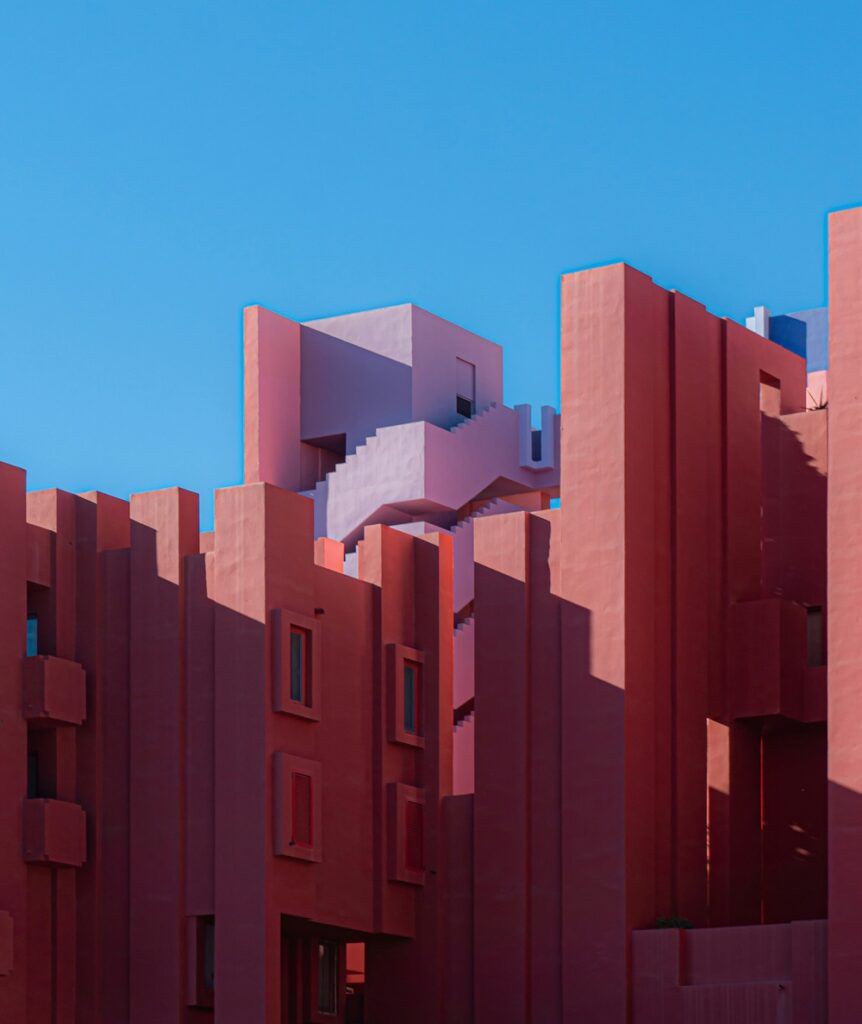
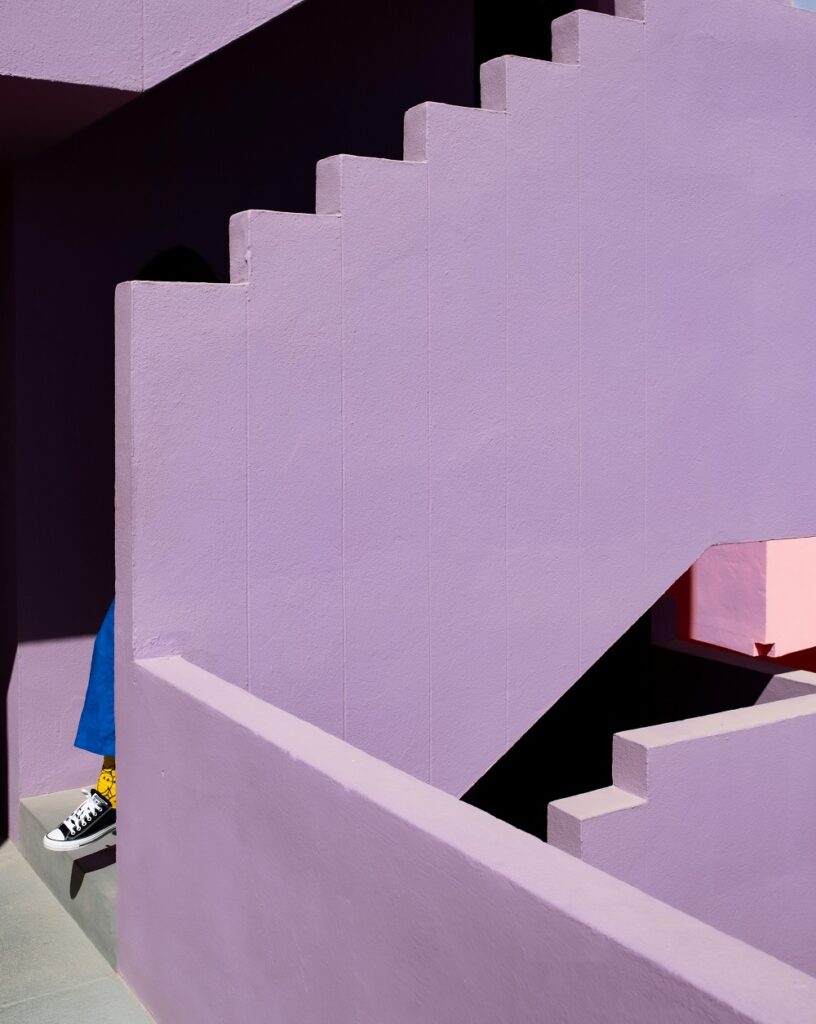
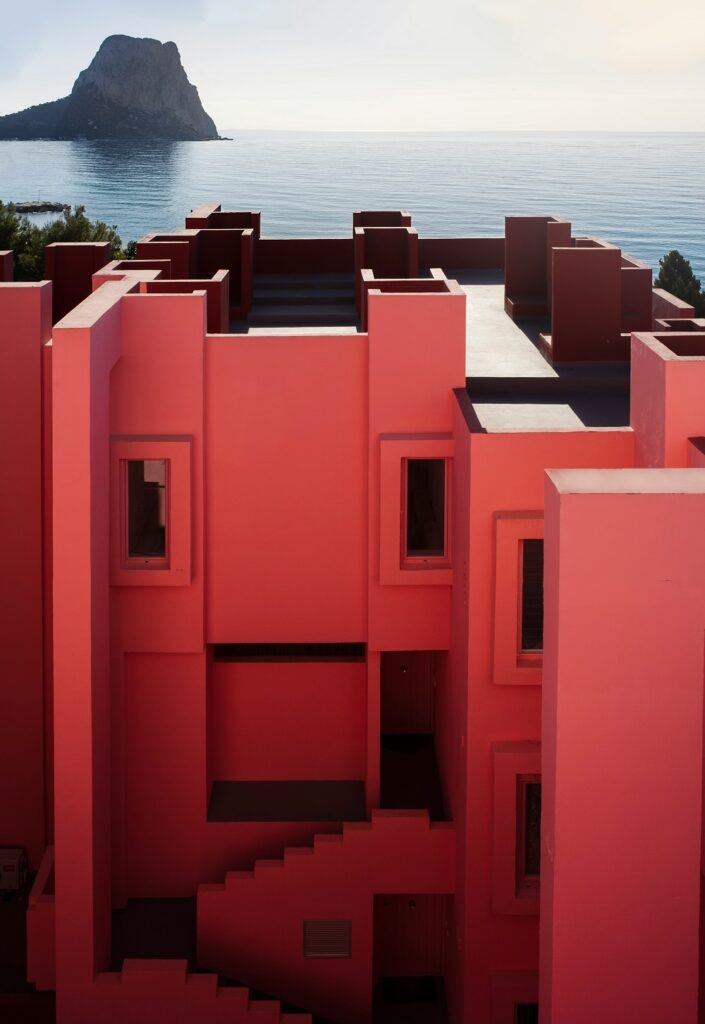

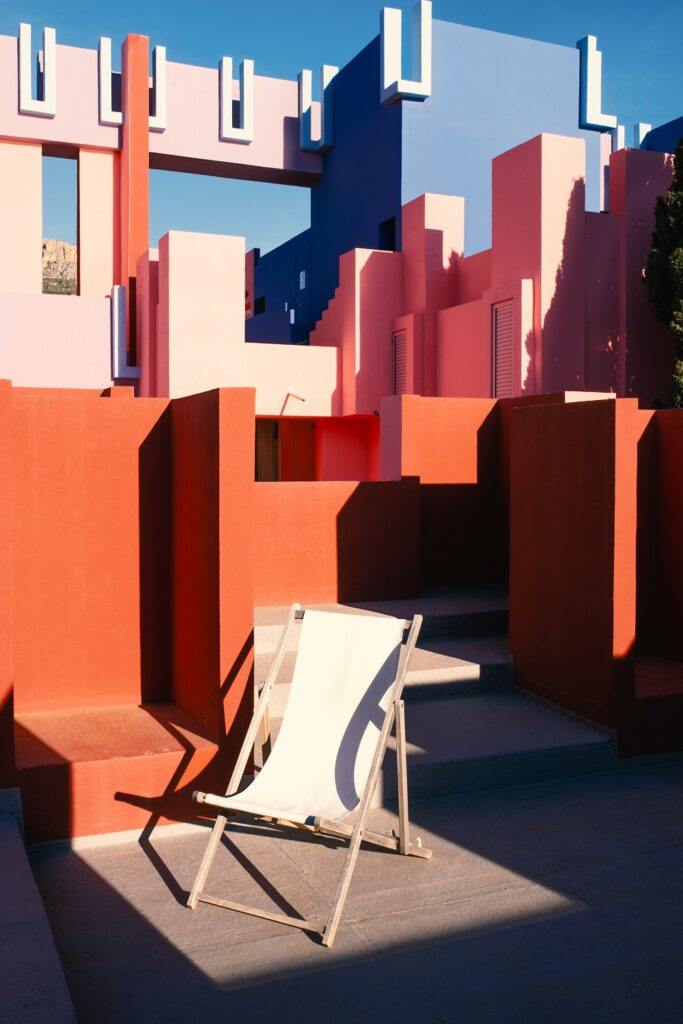

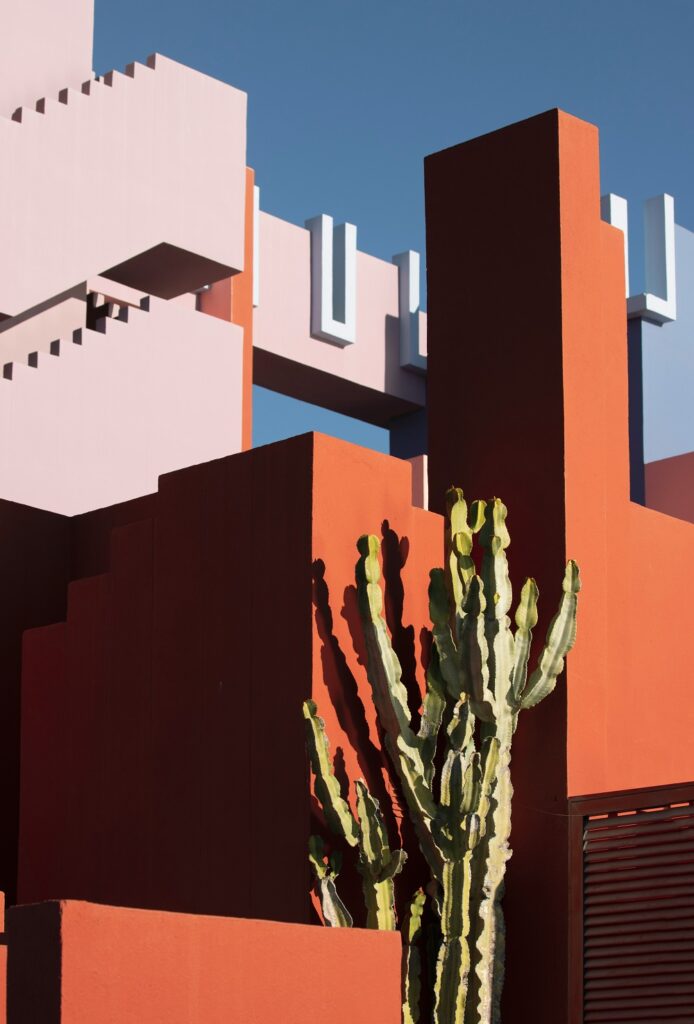
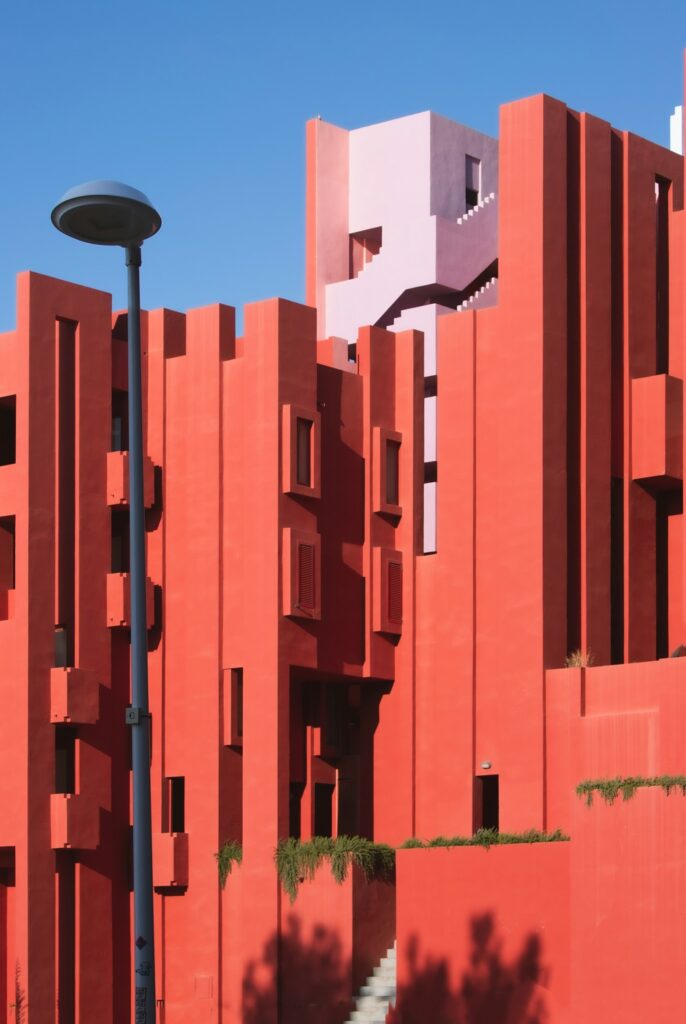

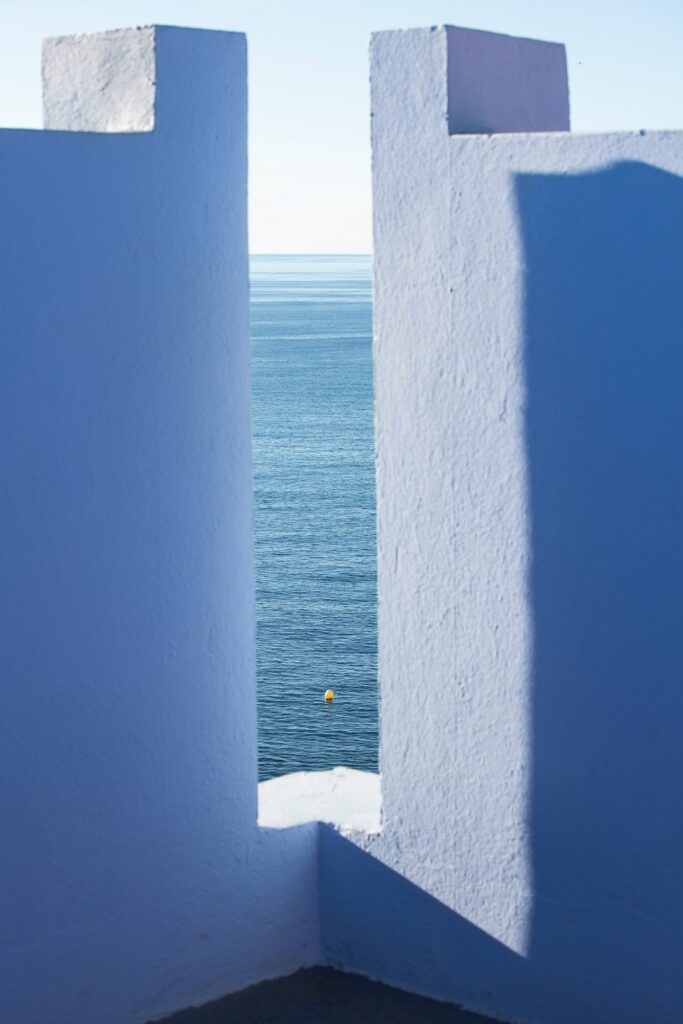
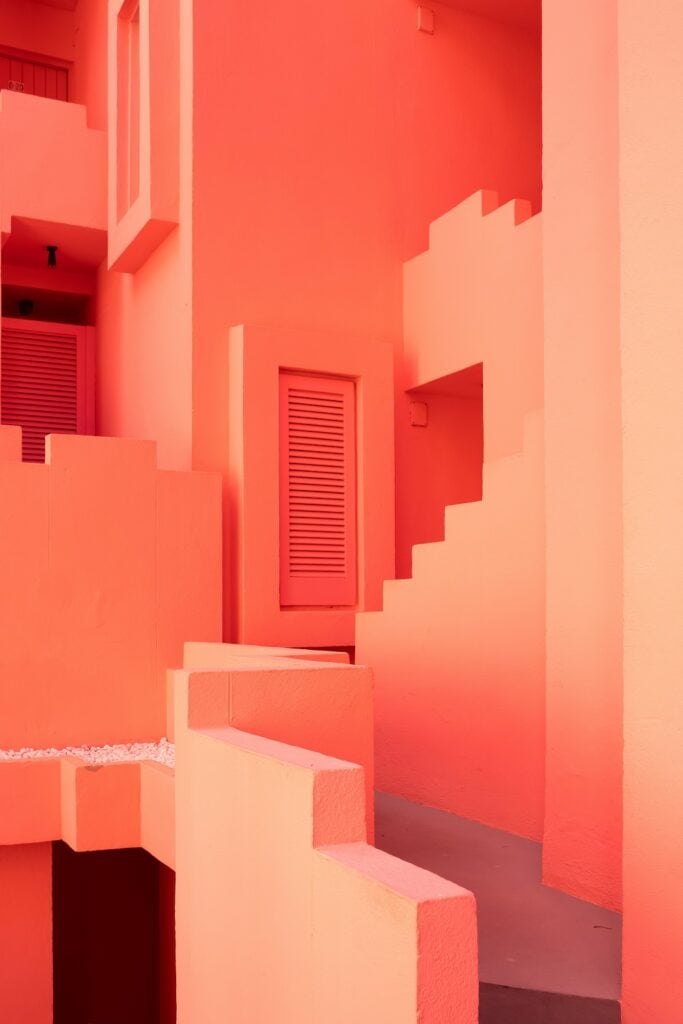
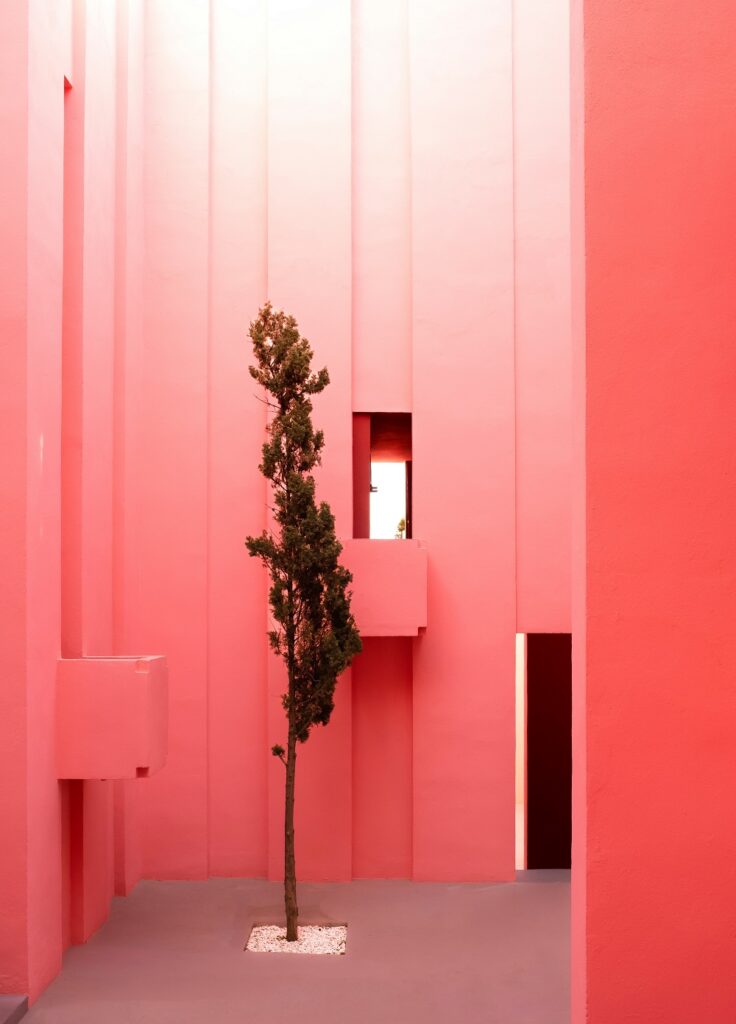

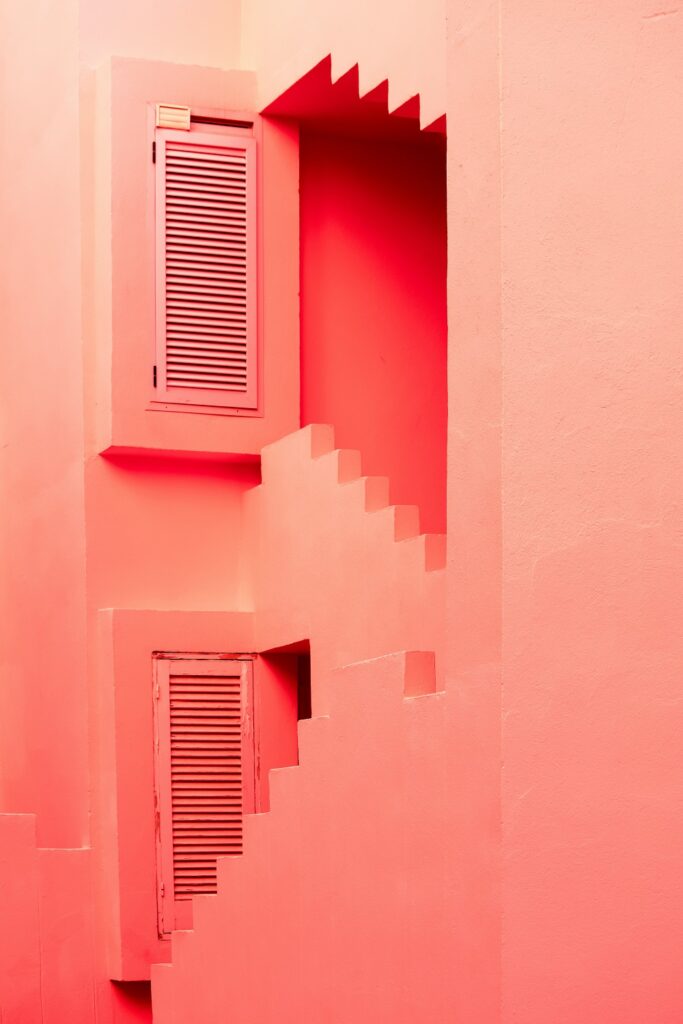
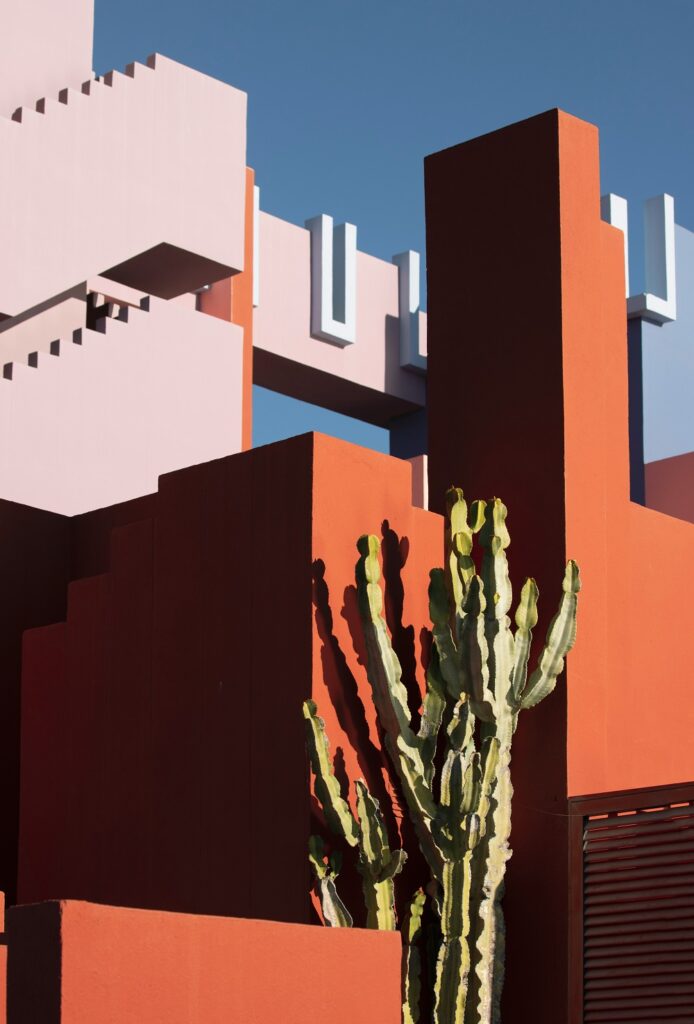
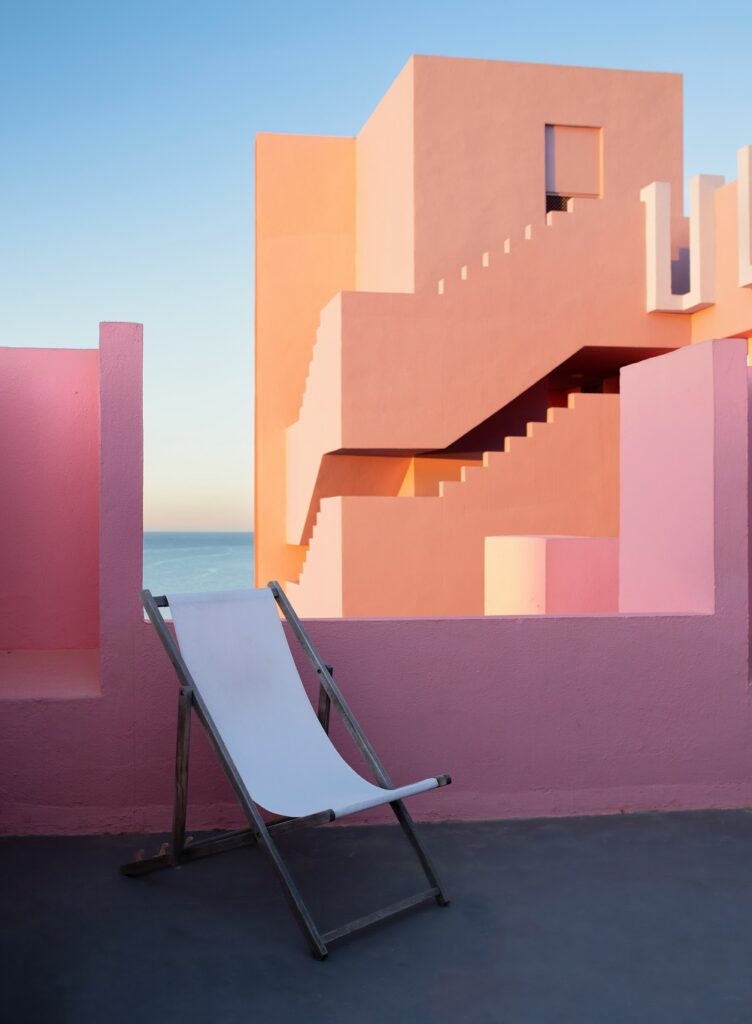
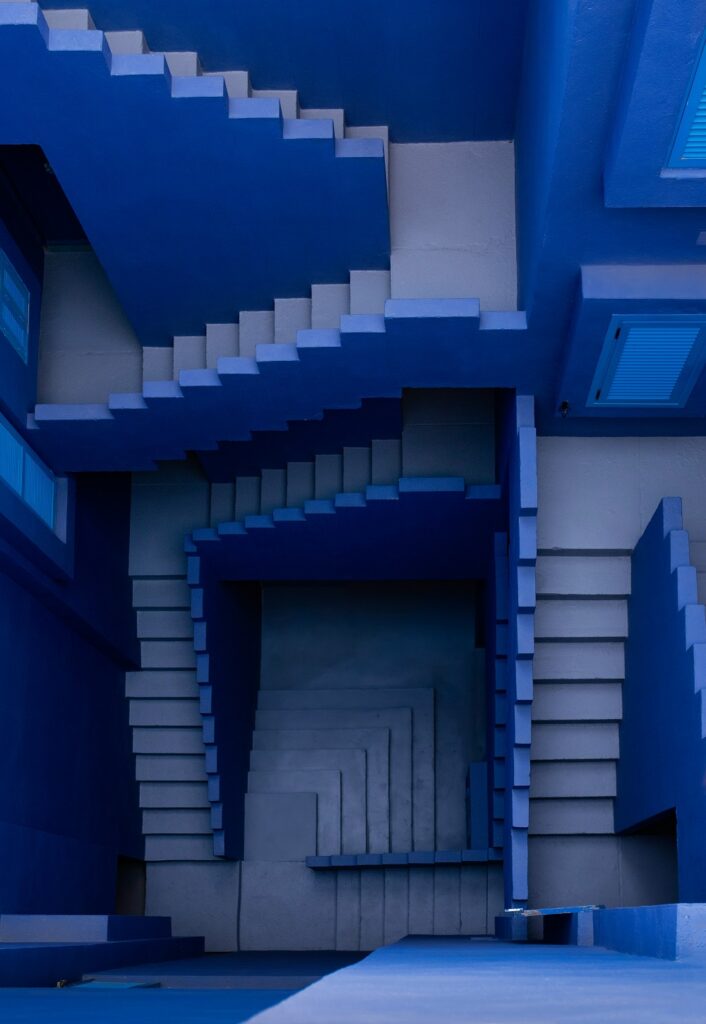
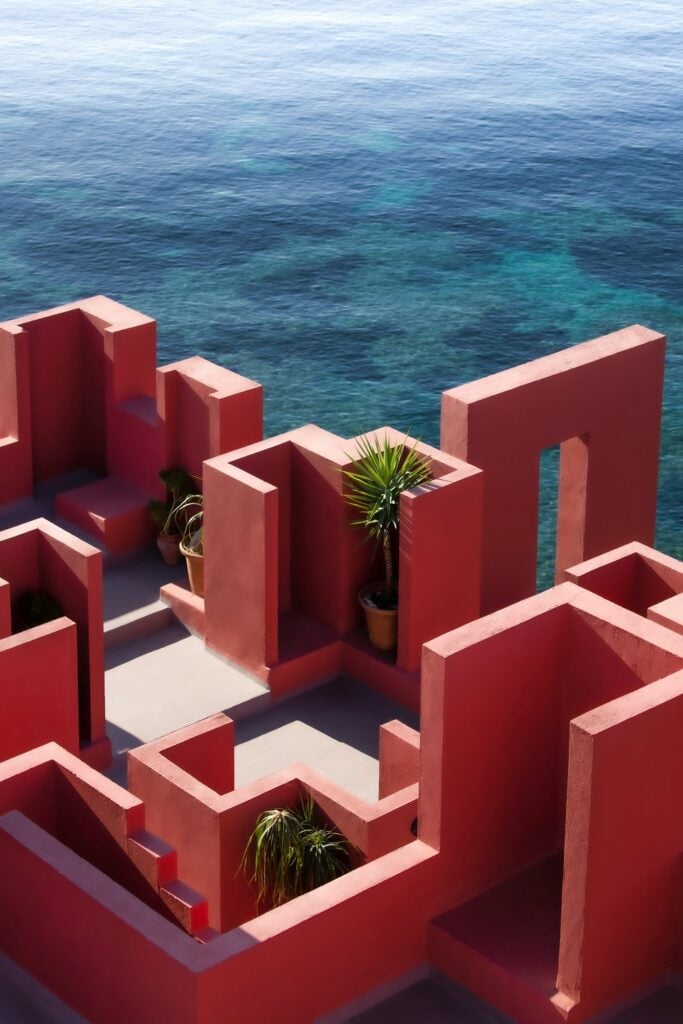
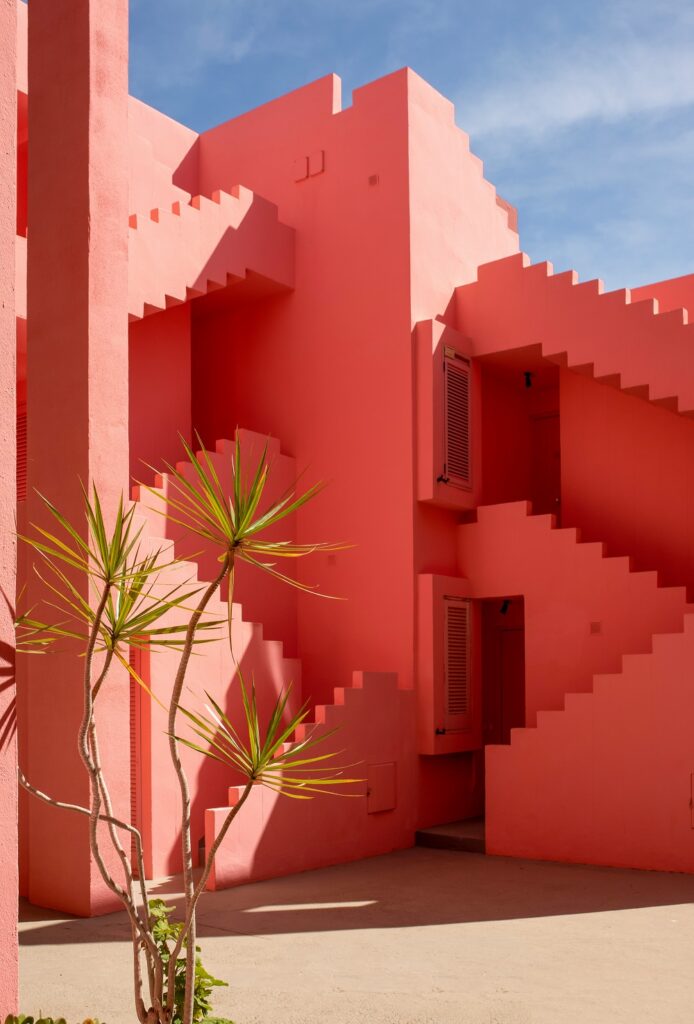
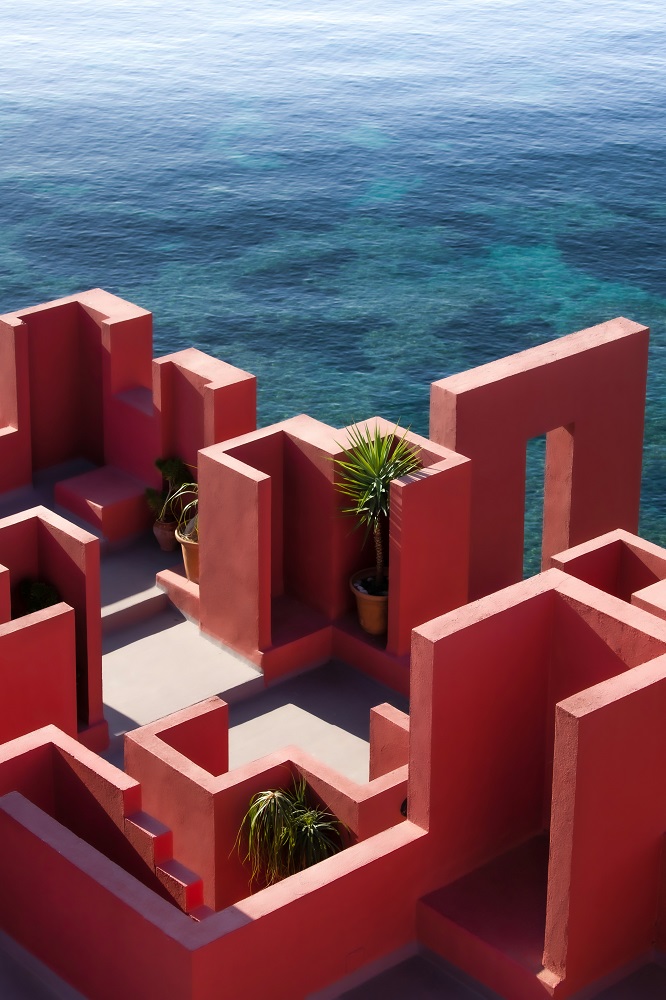
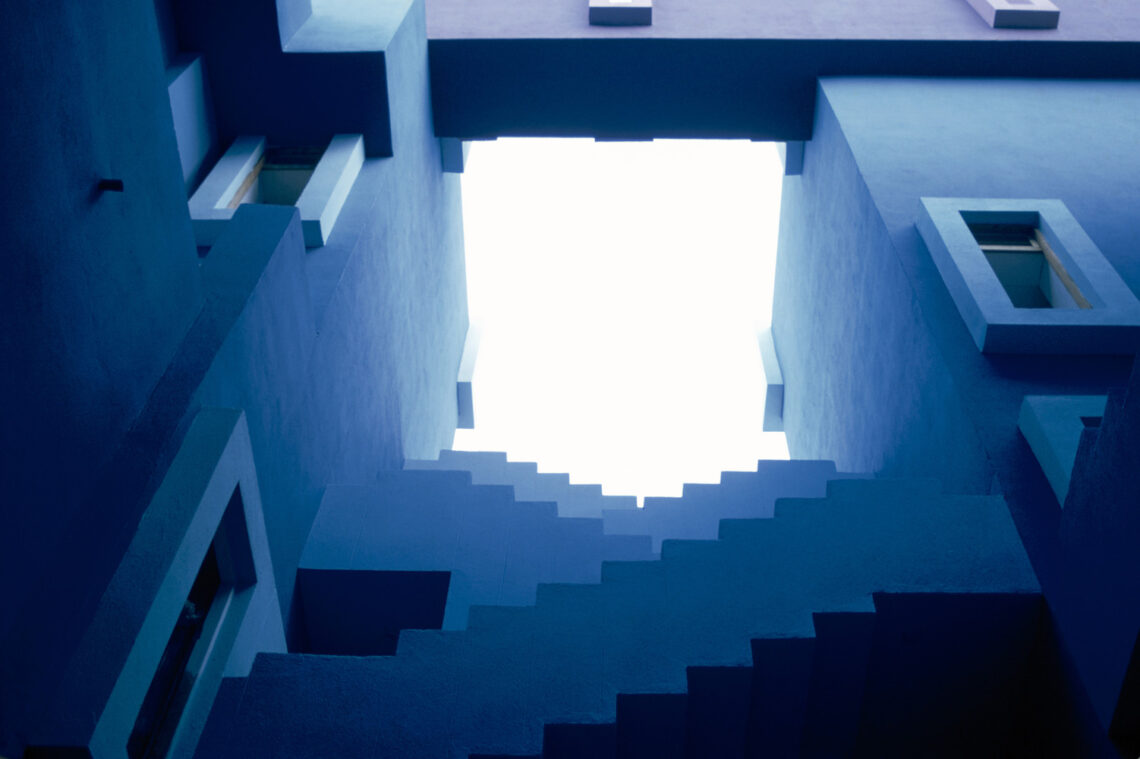
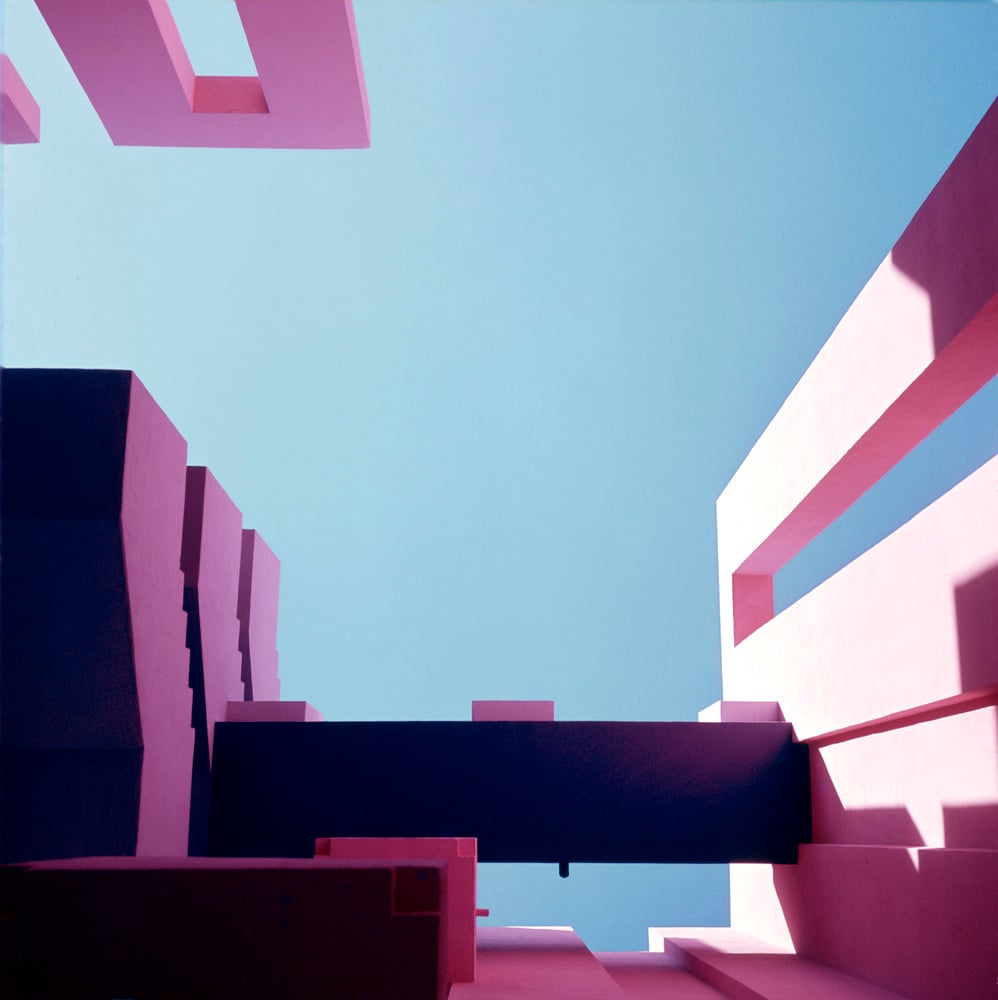
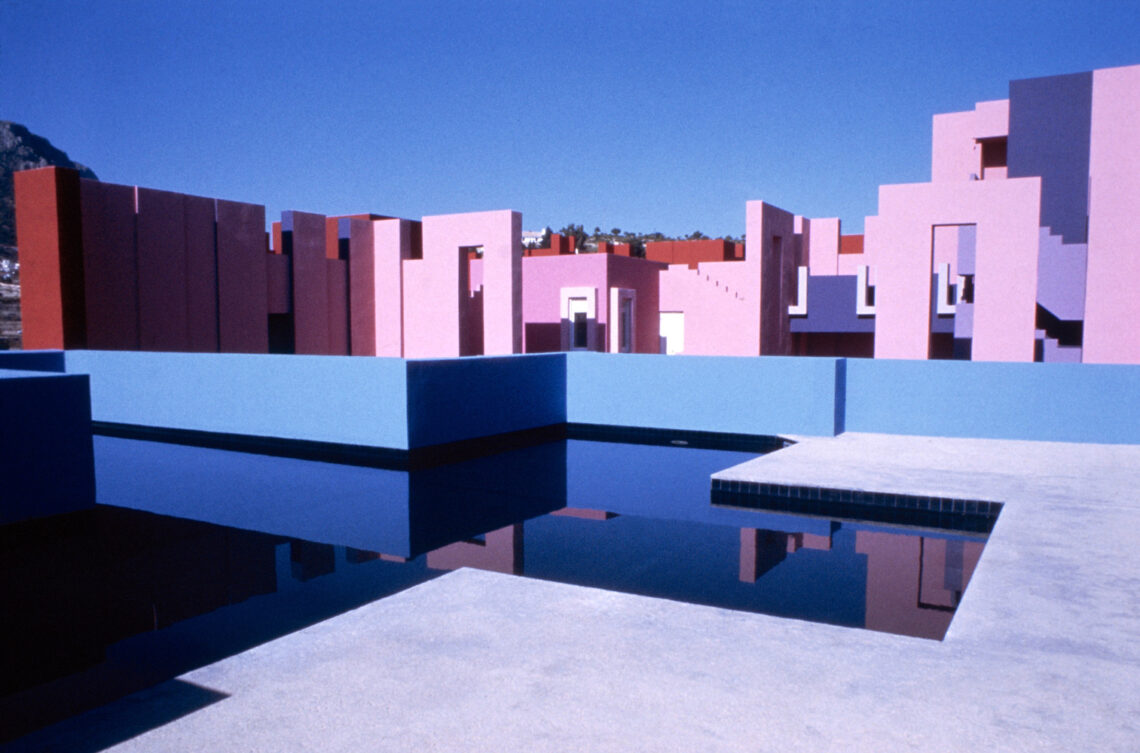
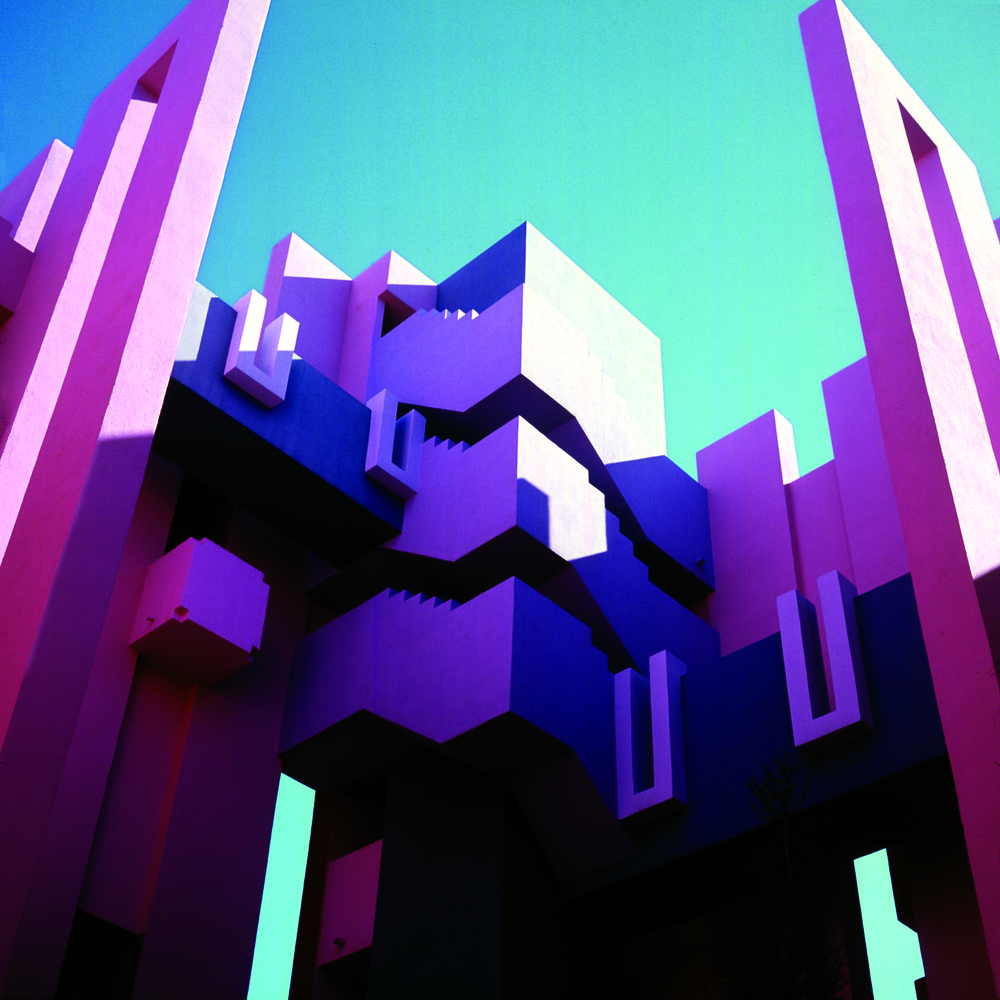
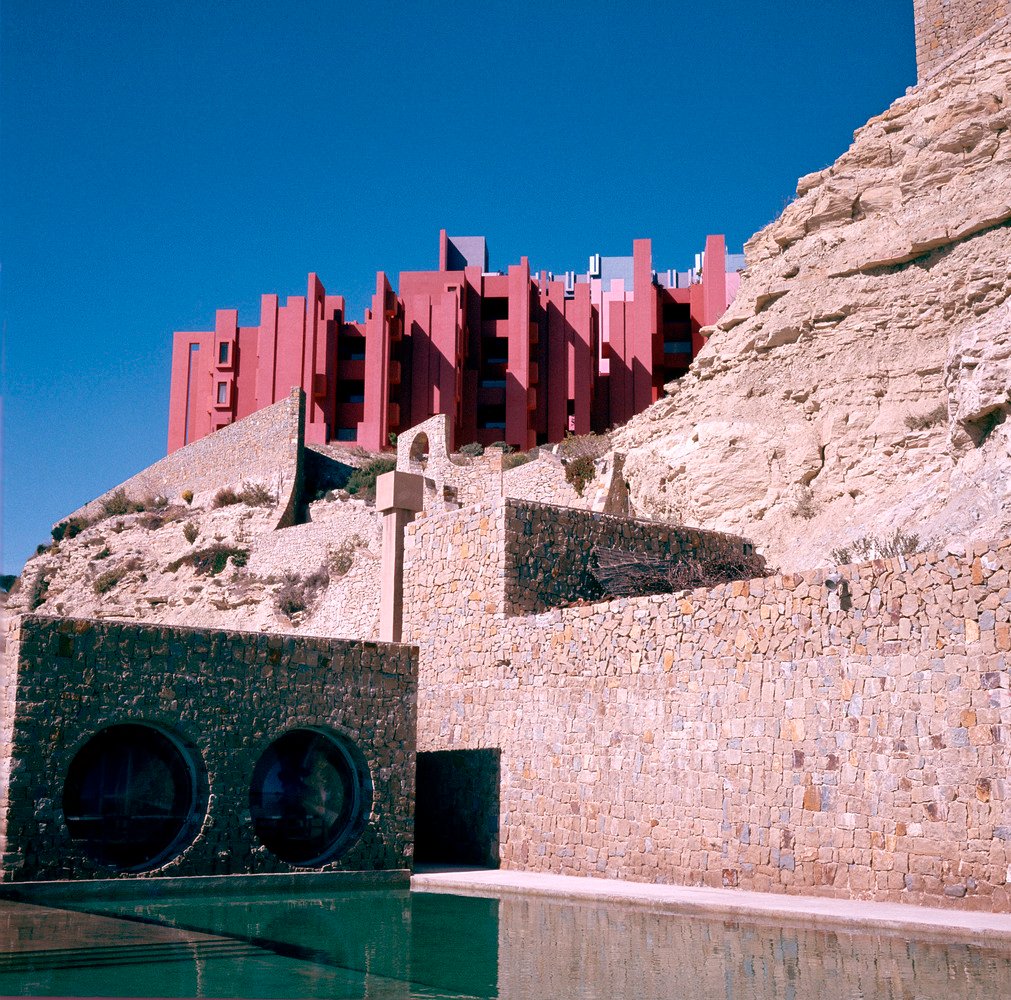
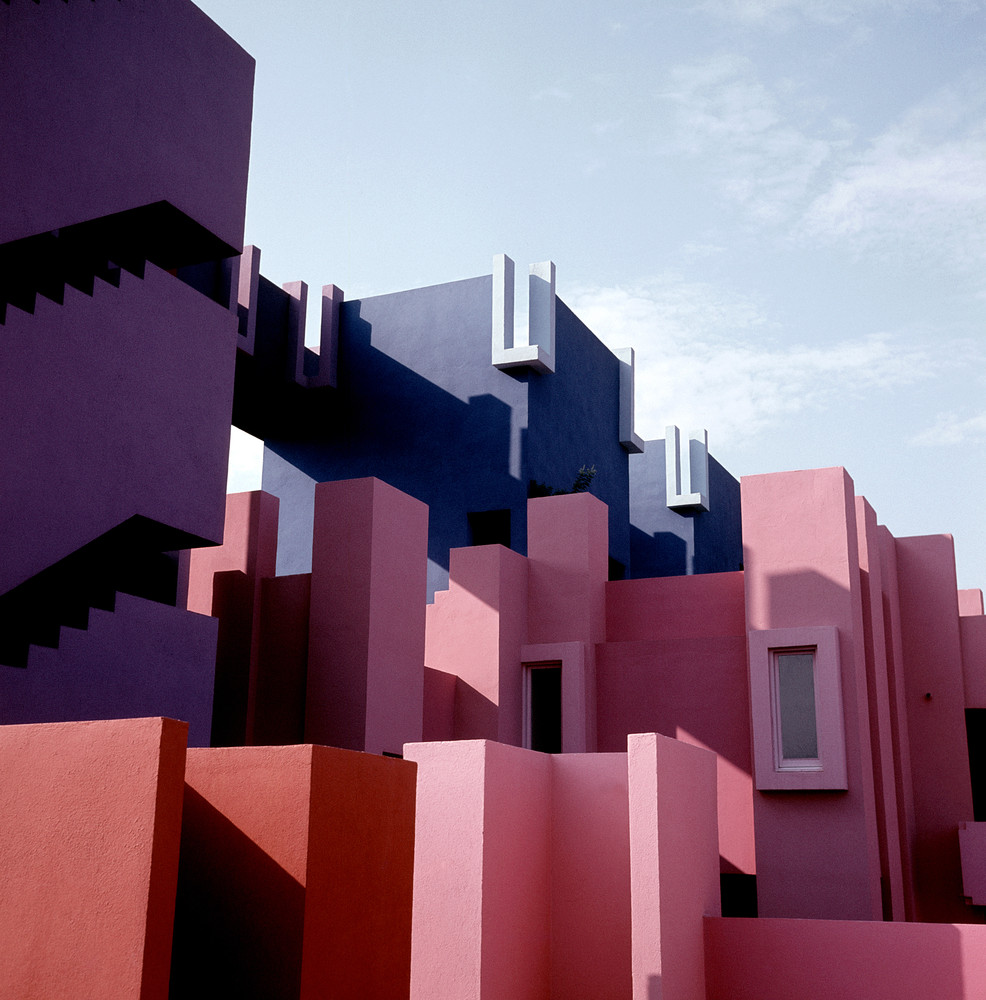
Where did Ricardo Bofill study?
Ricardo Bofill studied at several institutions throughout his early education and architectural training. Born in Barcelona in 1939, he attended primary school at Escola Virtèlia starting in 1942. In 1949, he switched to the Catholic Escuela Andersen in Barcelona. For his secondary education in the 1950s, Bofill studied at the Lycée français de Barcelone, a French international school in Barcelona. After finishing high school, Bofill pursued professional architecture studies. He first enrolled in the architecture program at the Escola Tècnica Superior d’Arquitectura de Barcelona in the late 1950s, the oldest architecture school in Catalonia. However, he did not complete his degree there. In 1957, Bofill left Barcelona for the University of Geneva’s architecture school in Switzerland. The move was likely prompted by his expulsion from the Barcelona University for activist activities against the Franco regime. Bofill finished his architecture studies at Geneva, receiving his degree in 1960.
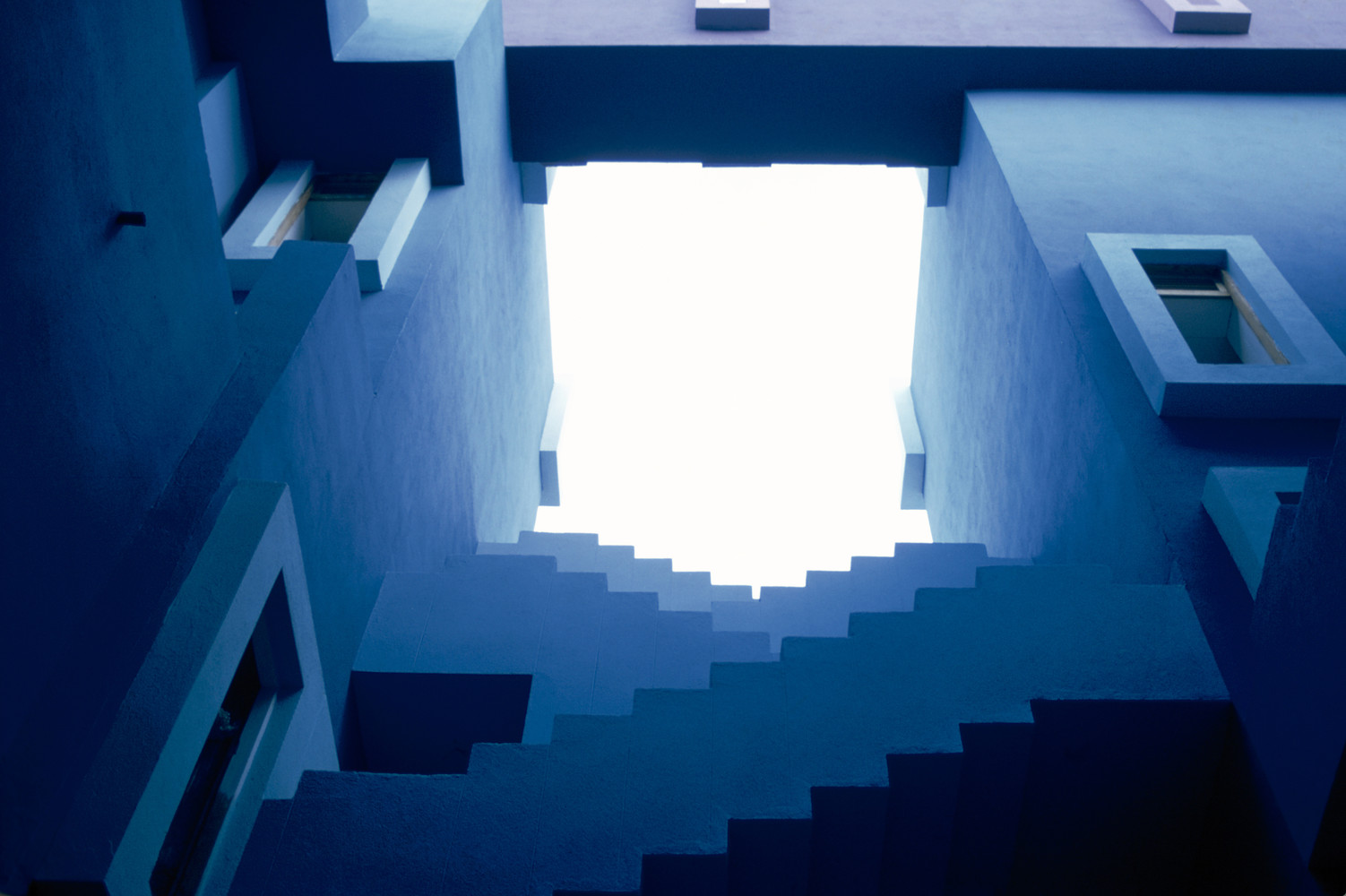
Did Ricardo Bofill have any famous teachers or students?
No, Bofill did not have famous students or teachers. However, he mentored and collaborated with many other architects and designers as the founder and leader of the Taller de Arquitectura architecture studio. Established in 1963, the Taller included a diverse, interdisciplinary team of architects, engineers, planners, and other creatives who worked together on projects. Bofill fostered a collaborative environment and allowed members to have creative input. Well-known architects of the Taller early on include Anna Bofill, Vicente Guallart, and Manuel Núñez Yanowsky. The collective workspace and design process of the Taller studio became an influential model in the industry. So, while he did not have famous teachers, Ricardo Bofill did help train and inspire future generations of architects through the unique collaborative Taller de Arquitectura studio he founded.

How can students learn from Ricardo Bofill’s work?
Ricardo Bofill’s career and diverse portfolio of projects offer many valuable lessons for future architecture students. First, his experimental approach shows the importance of conceptual boldness and pushing creative boundaries. Early works like Walden 7, with their unusual, surreal forms, demonstrate daring innovation beyond established conventions. Students can be inspired to develop their avant-garde visions through his example. Second, Bofill’s social housing projects reveal how architecture can uplift communities. Despite criticisms, efforts like Les Espaces d’Abraxas brought monumentality and visual richness to affordable housing. This social mission to elevate the urban environment for all socioeconomic groups is an important takeaway.
Third, his postmodern architecture illustrates the imaginative use of historical elements, scale, and symbolism. The Temple de La Muralla Marca Hispanica playfully recombined classical forms in new contexts. Students can learn creative techniques for reinventing the past.

